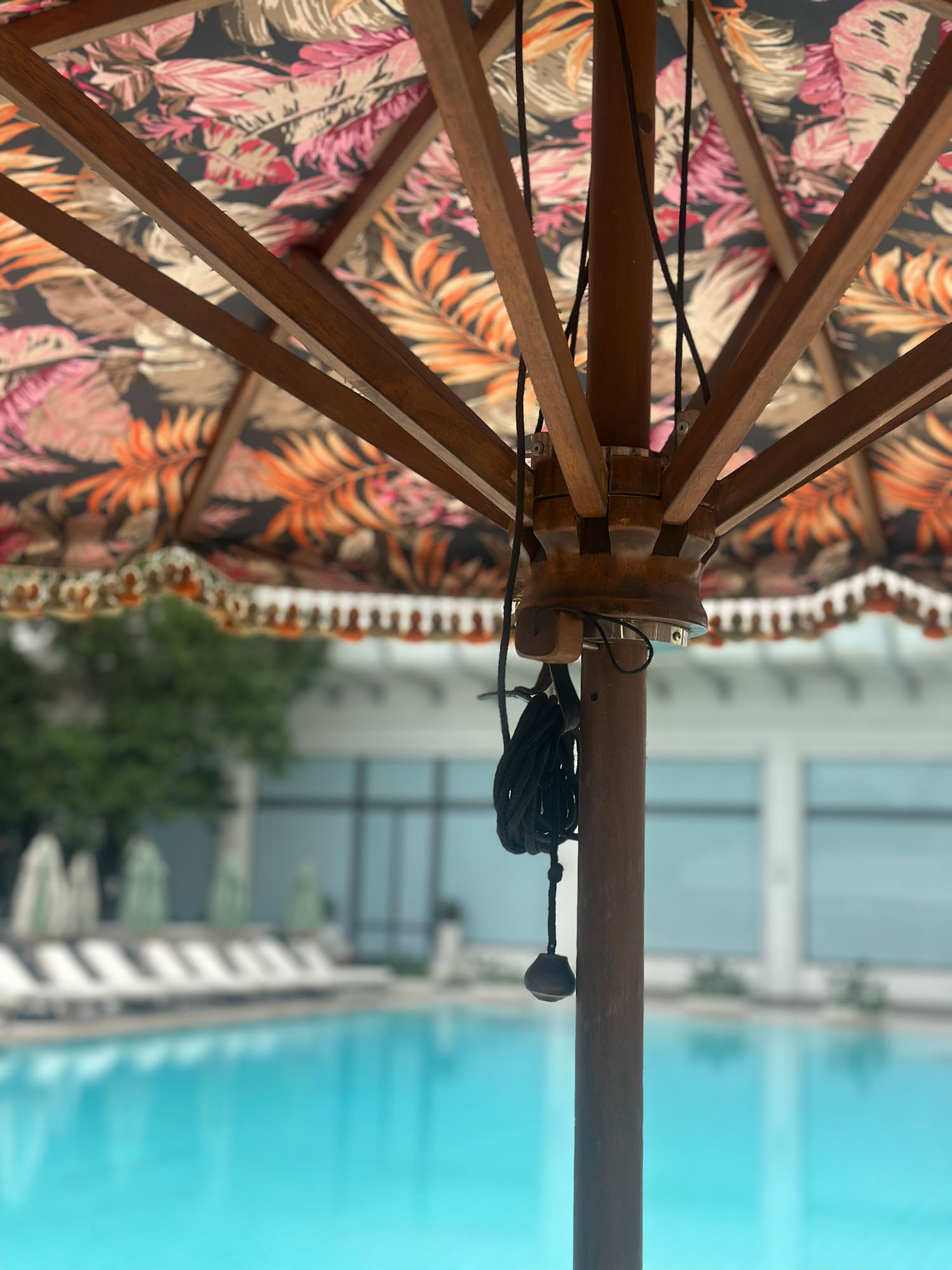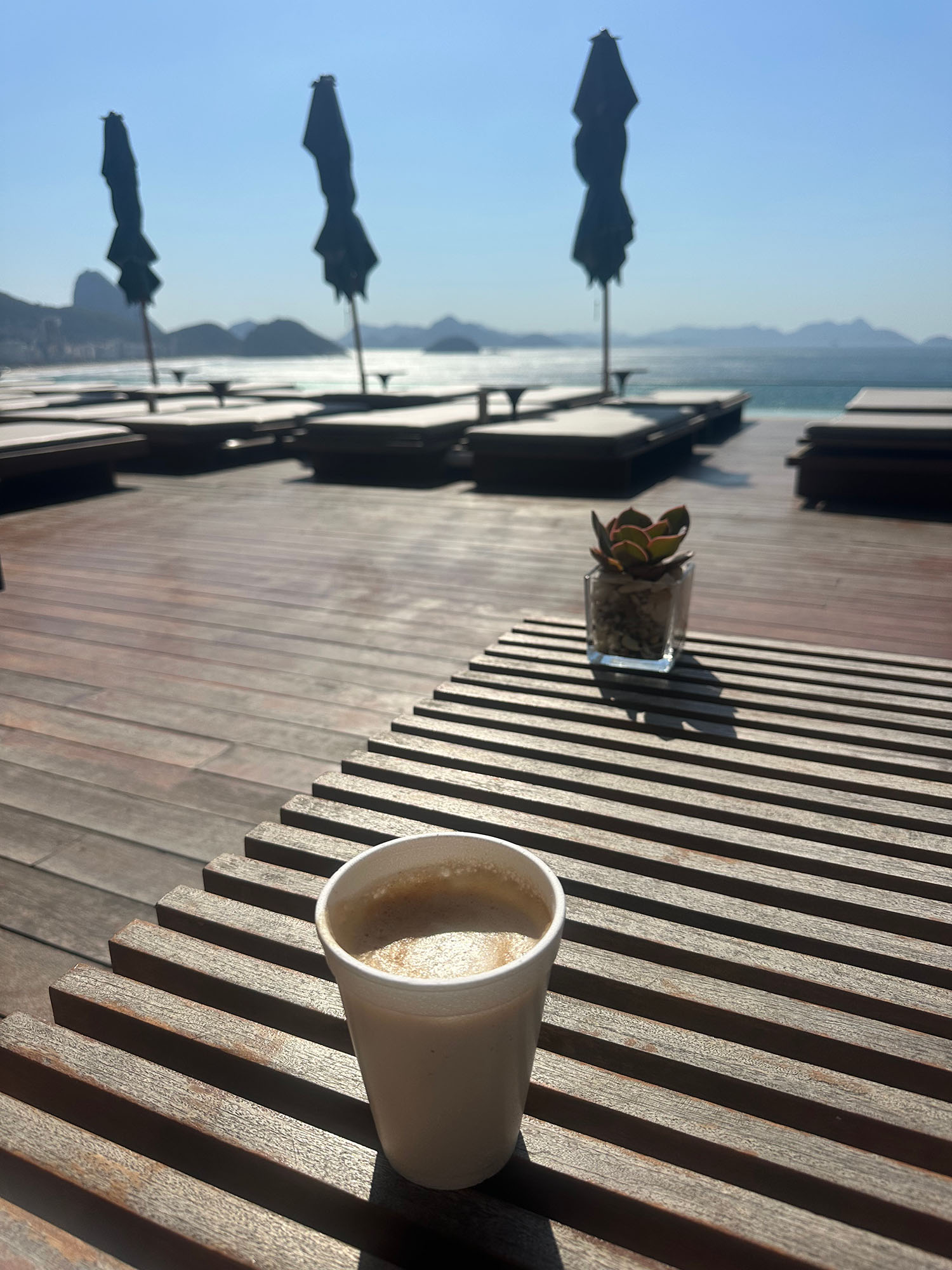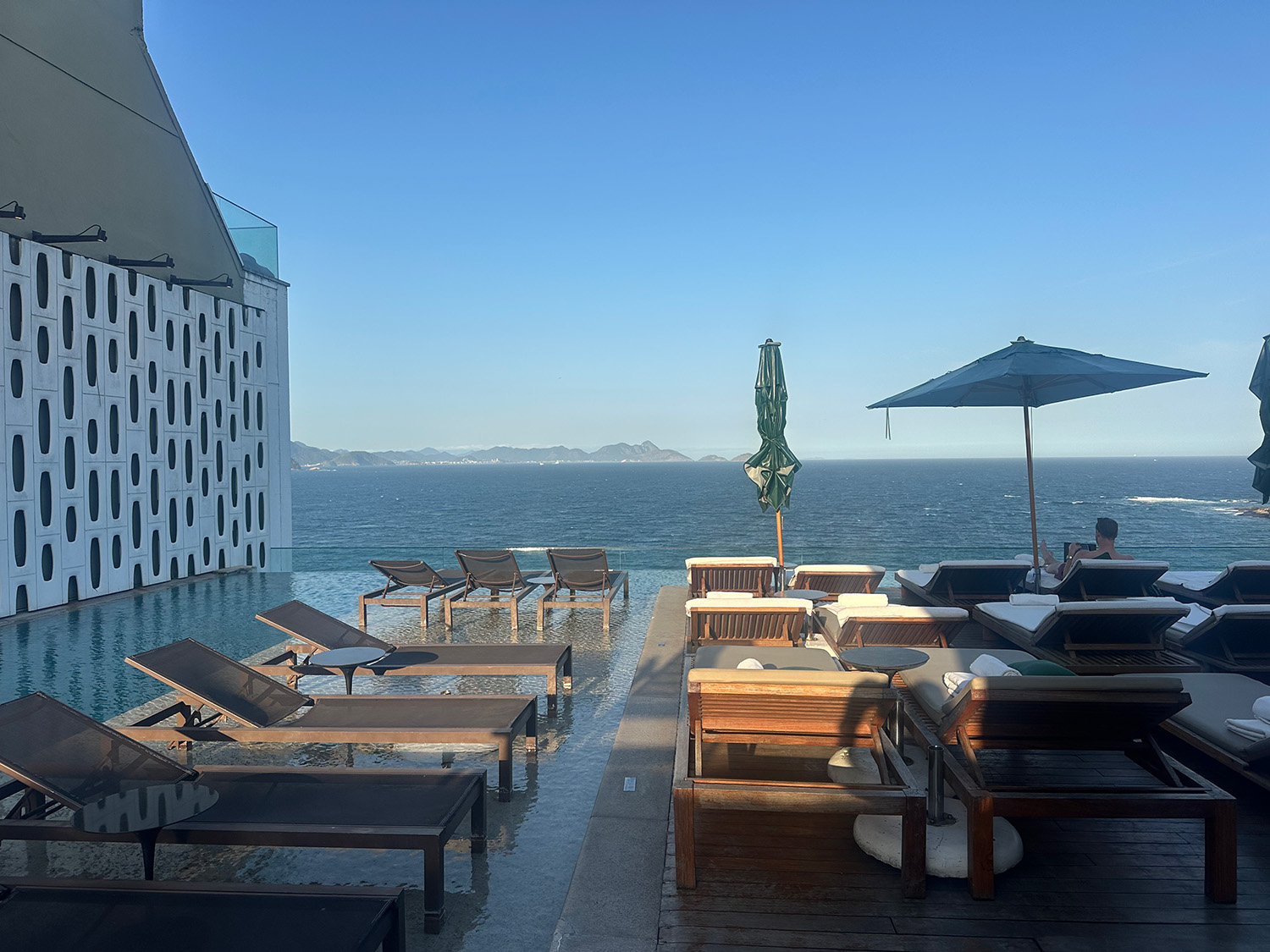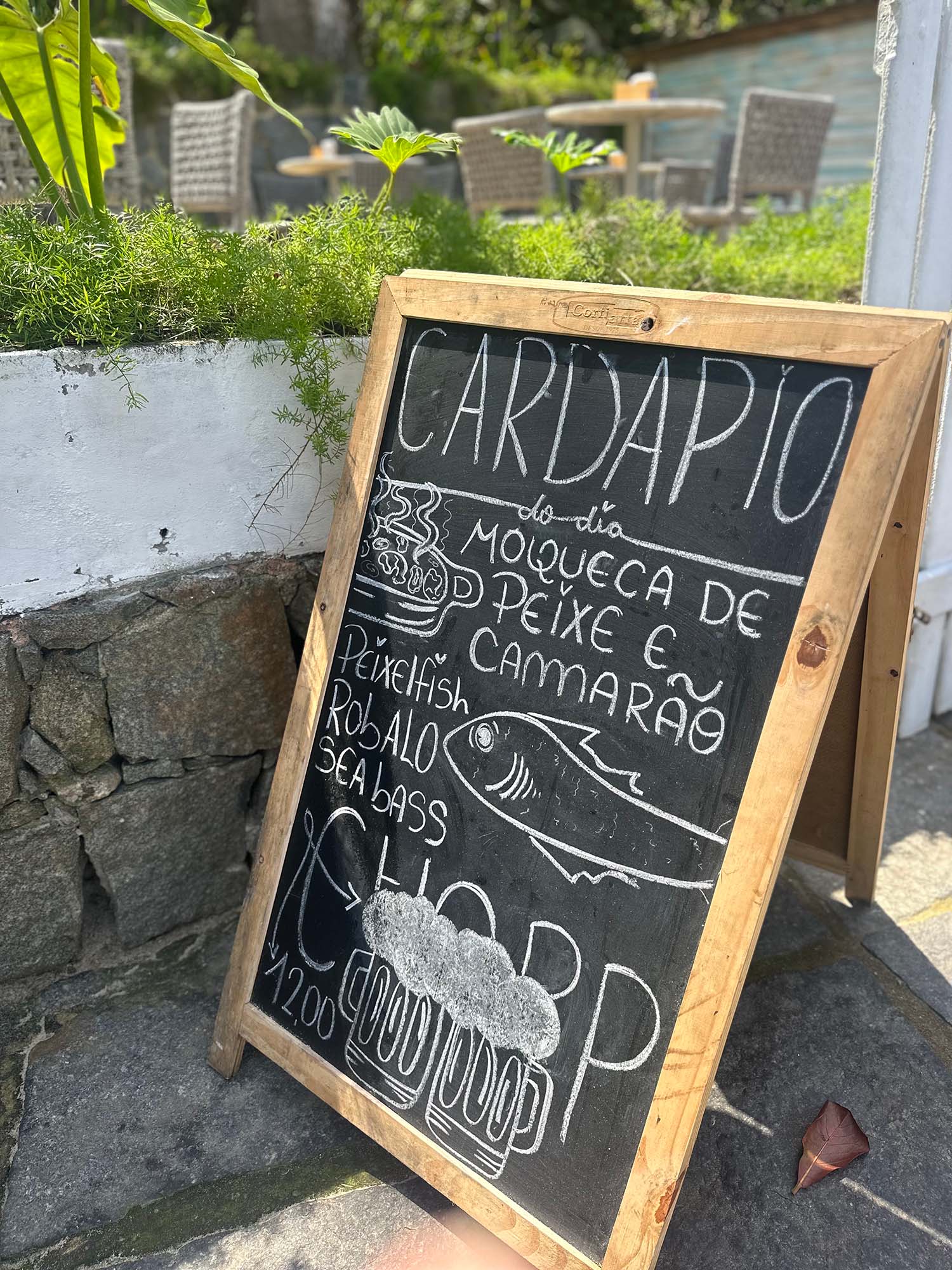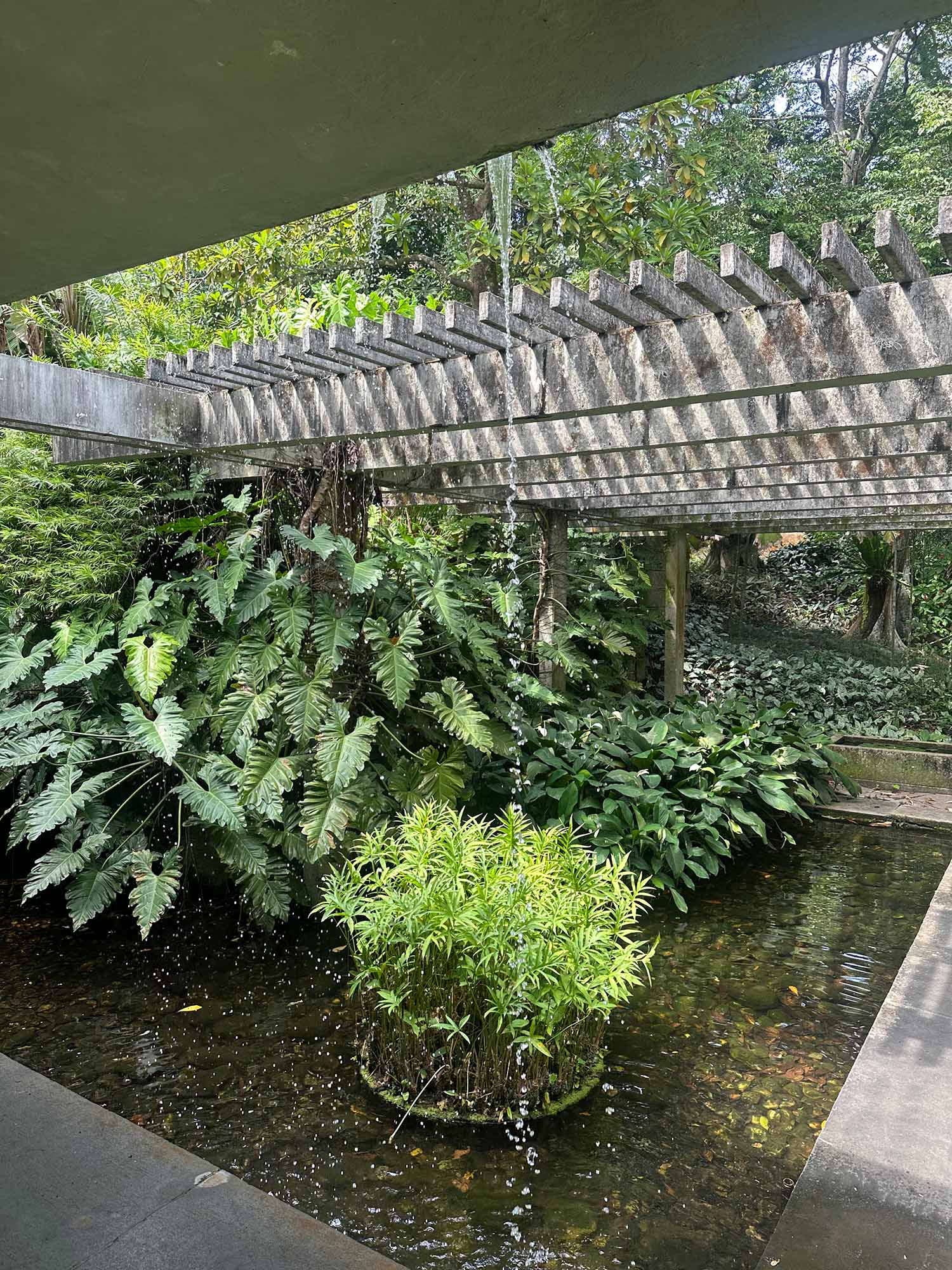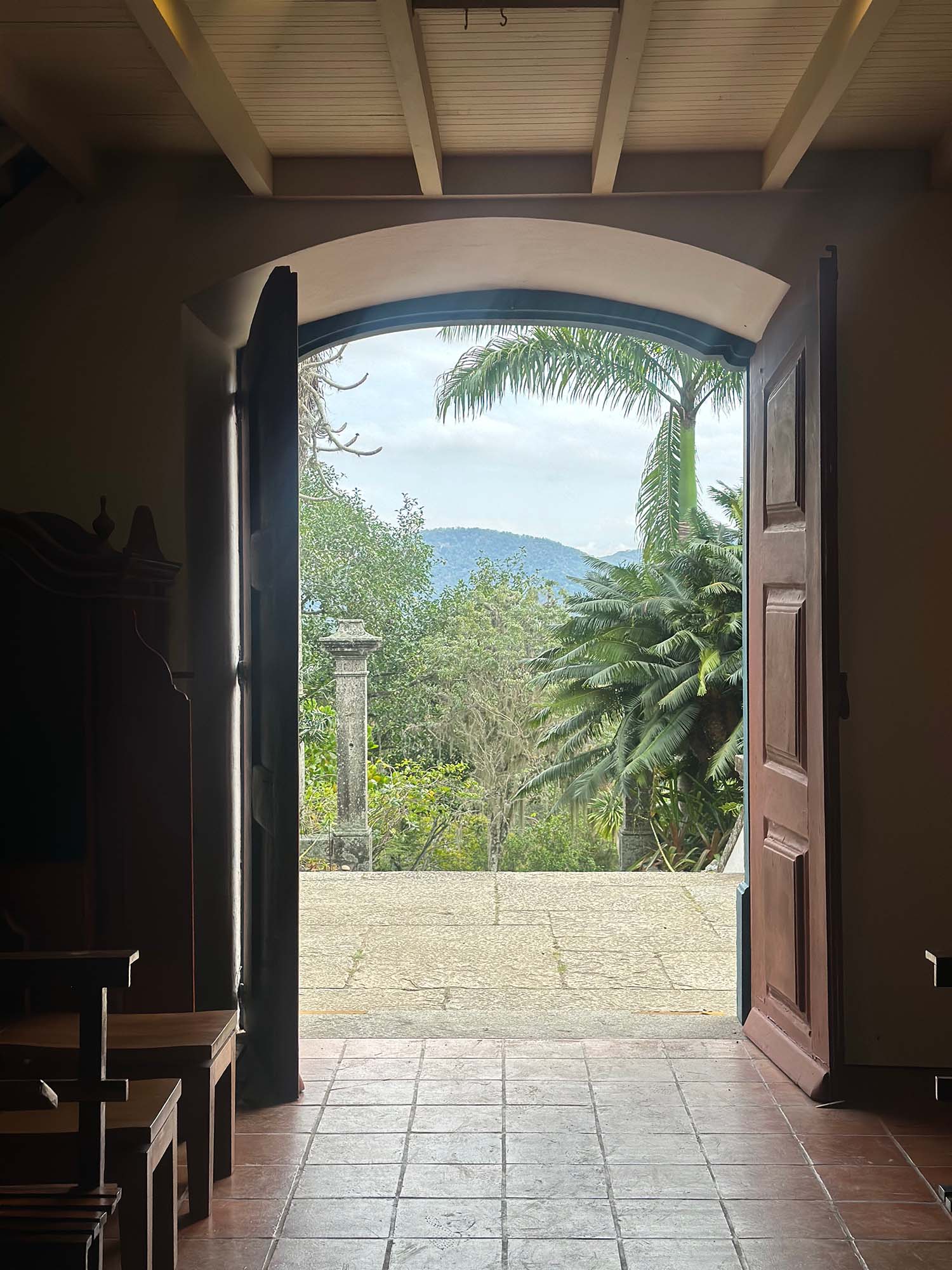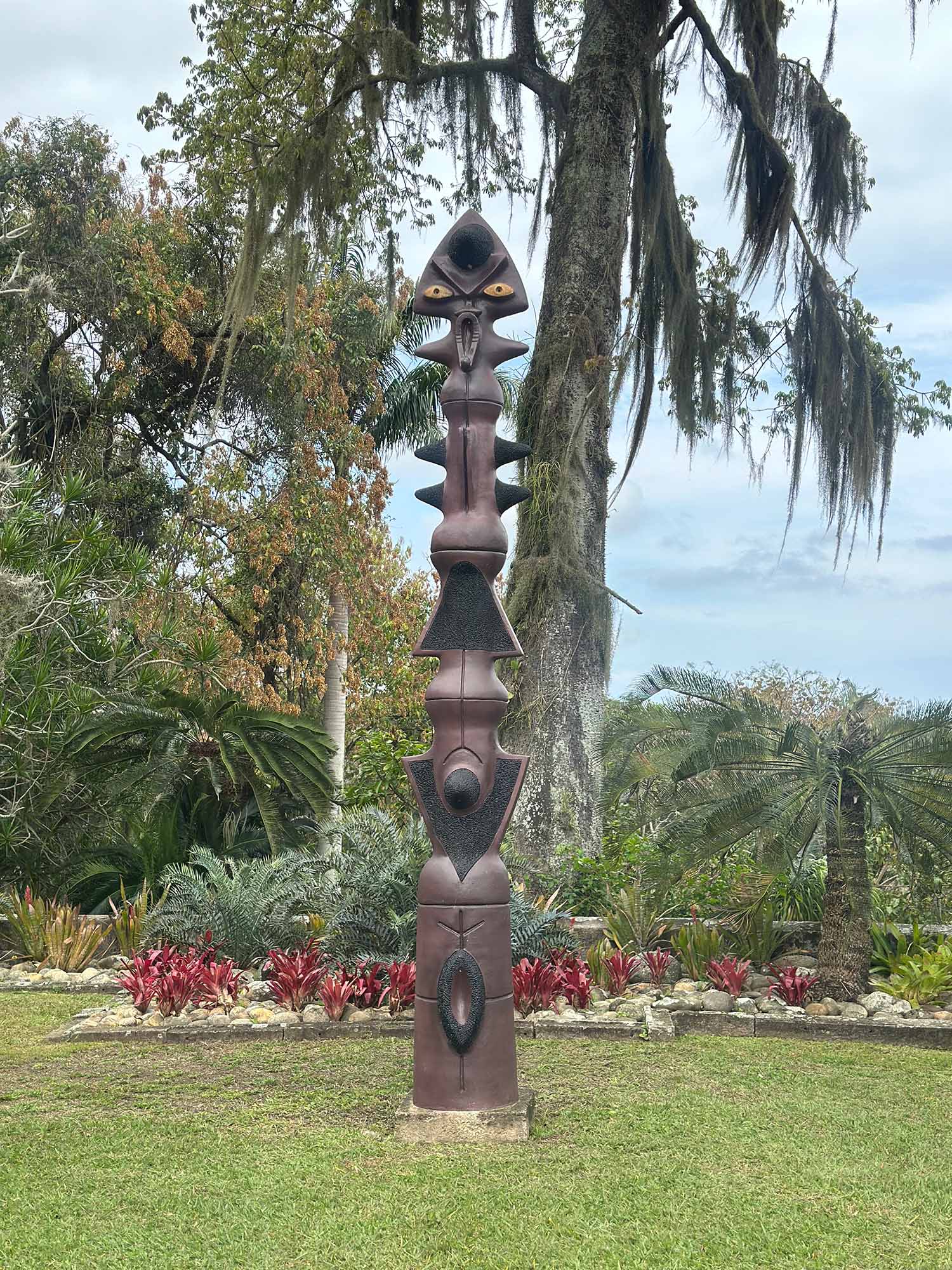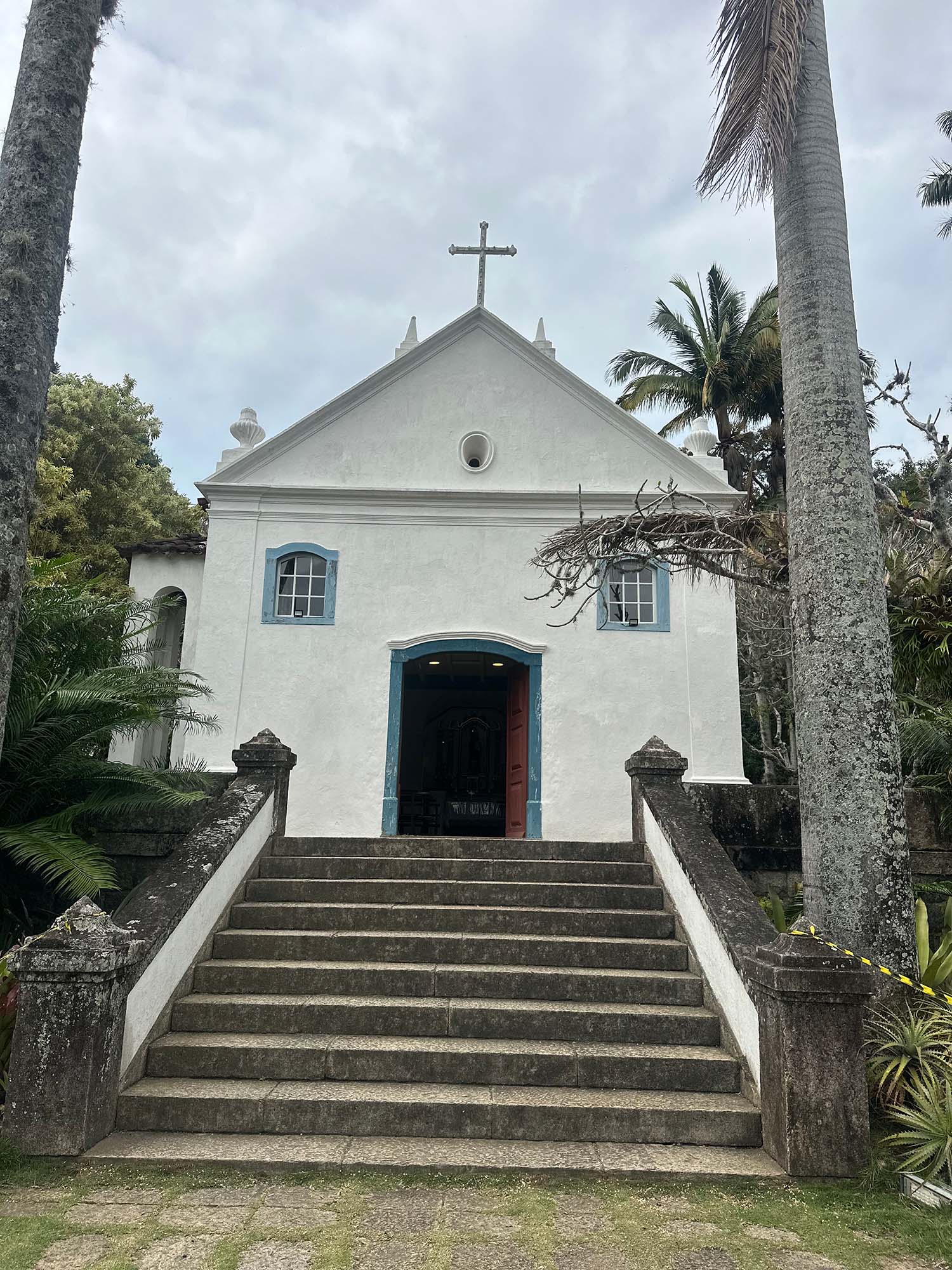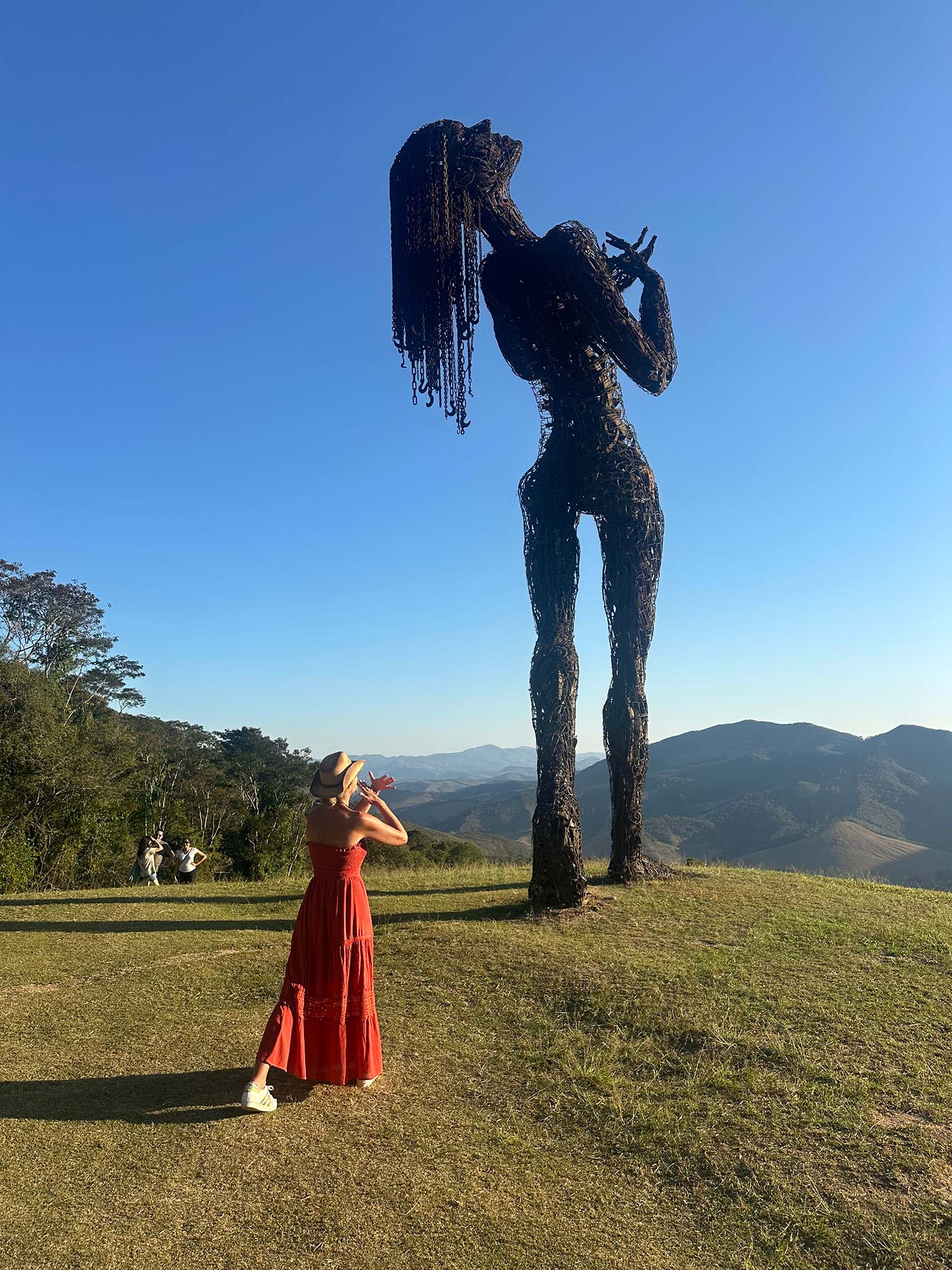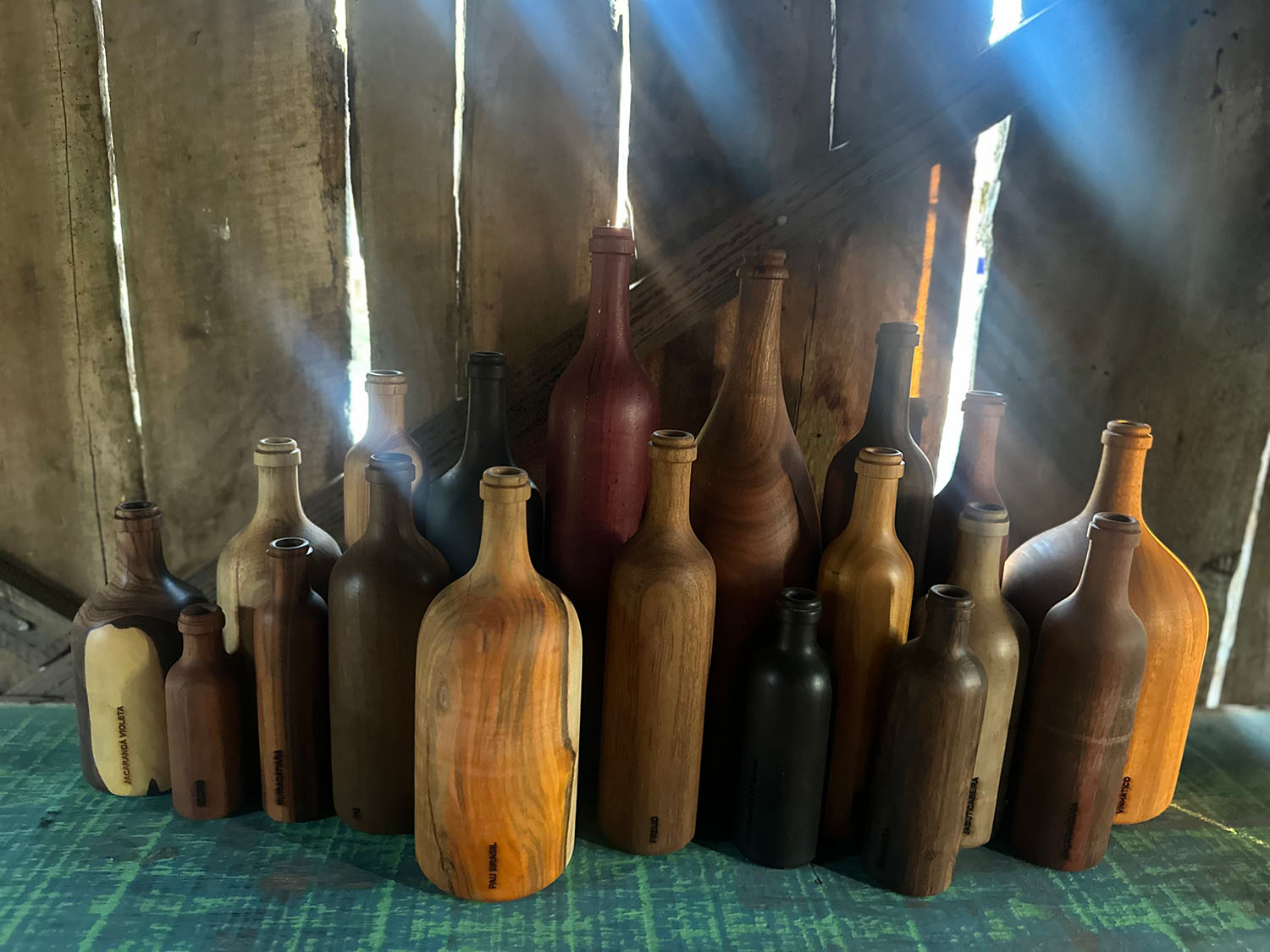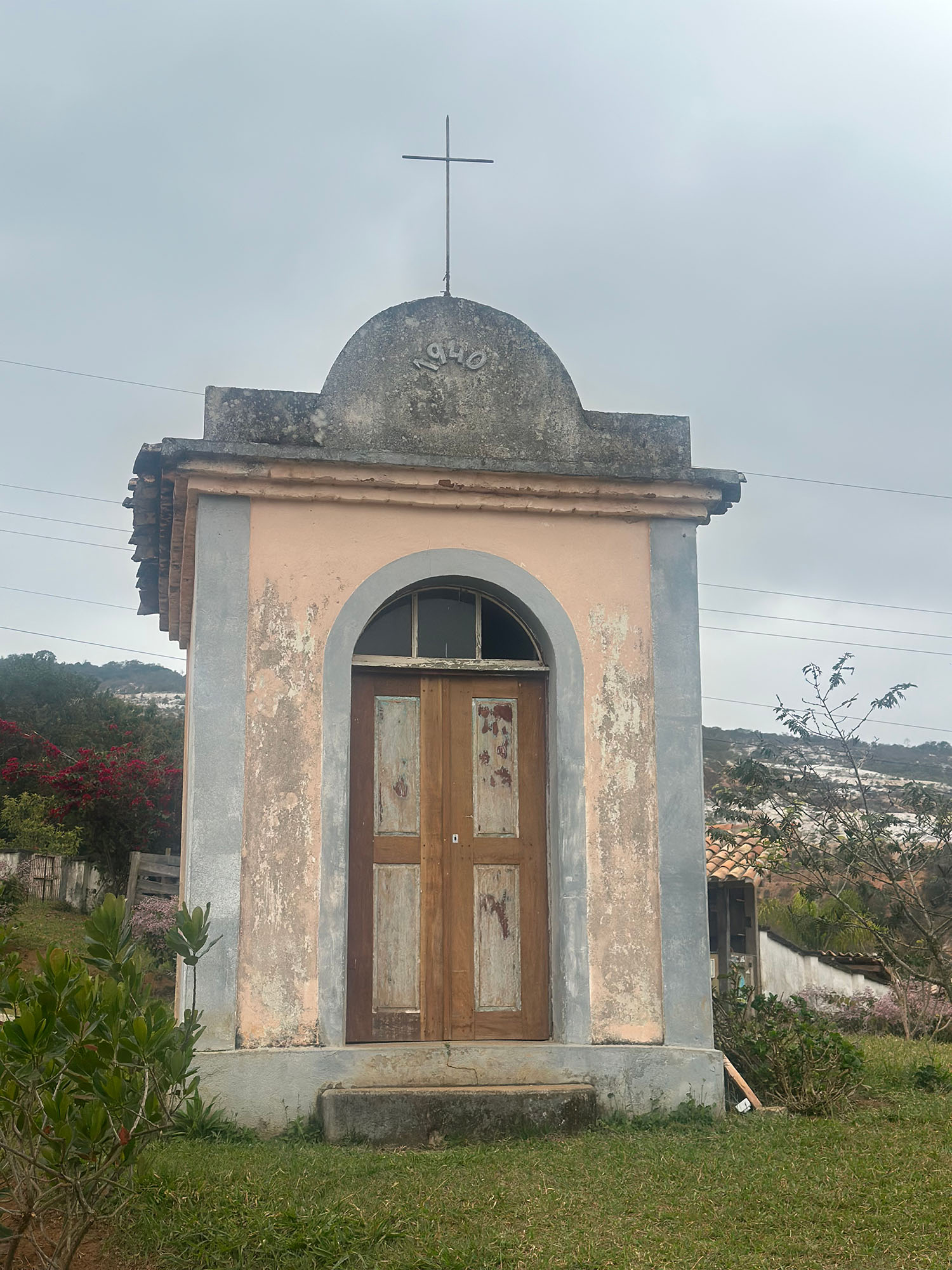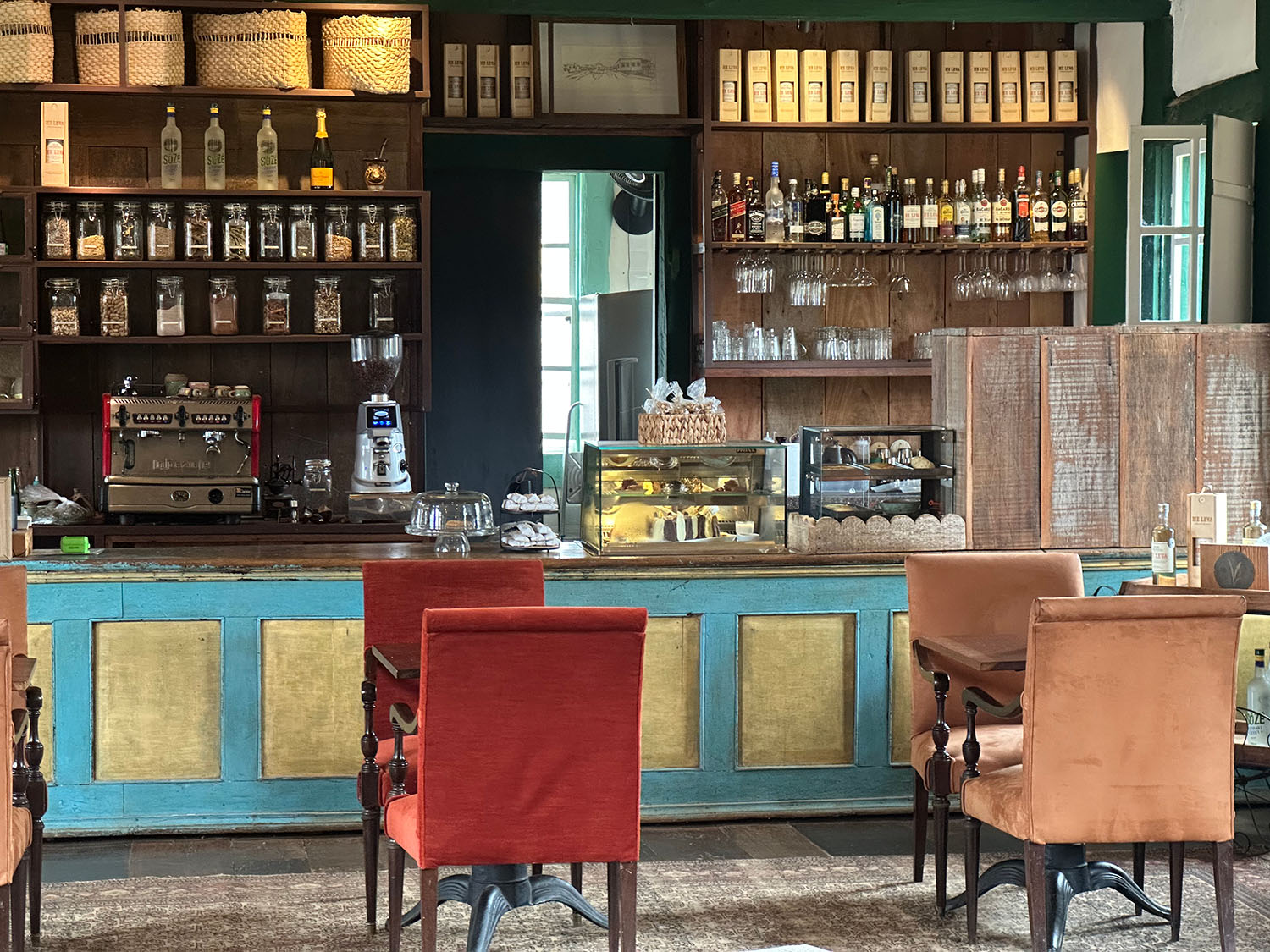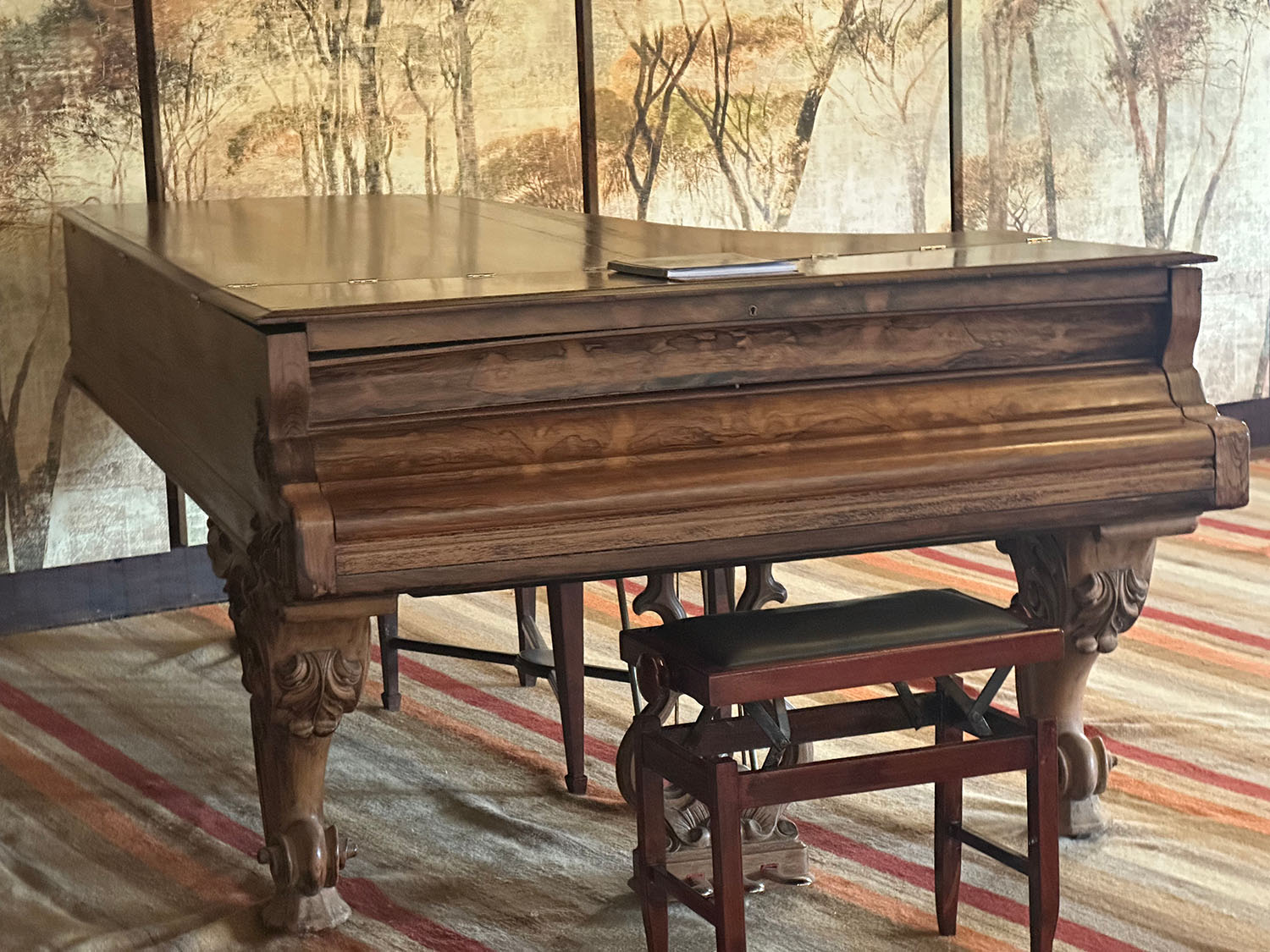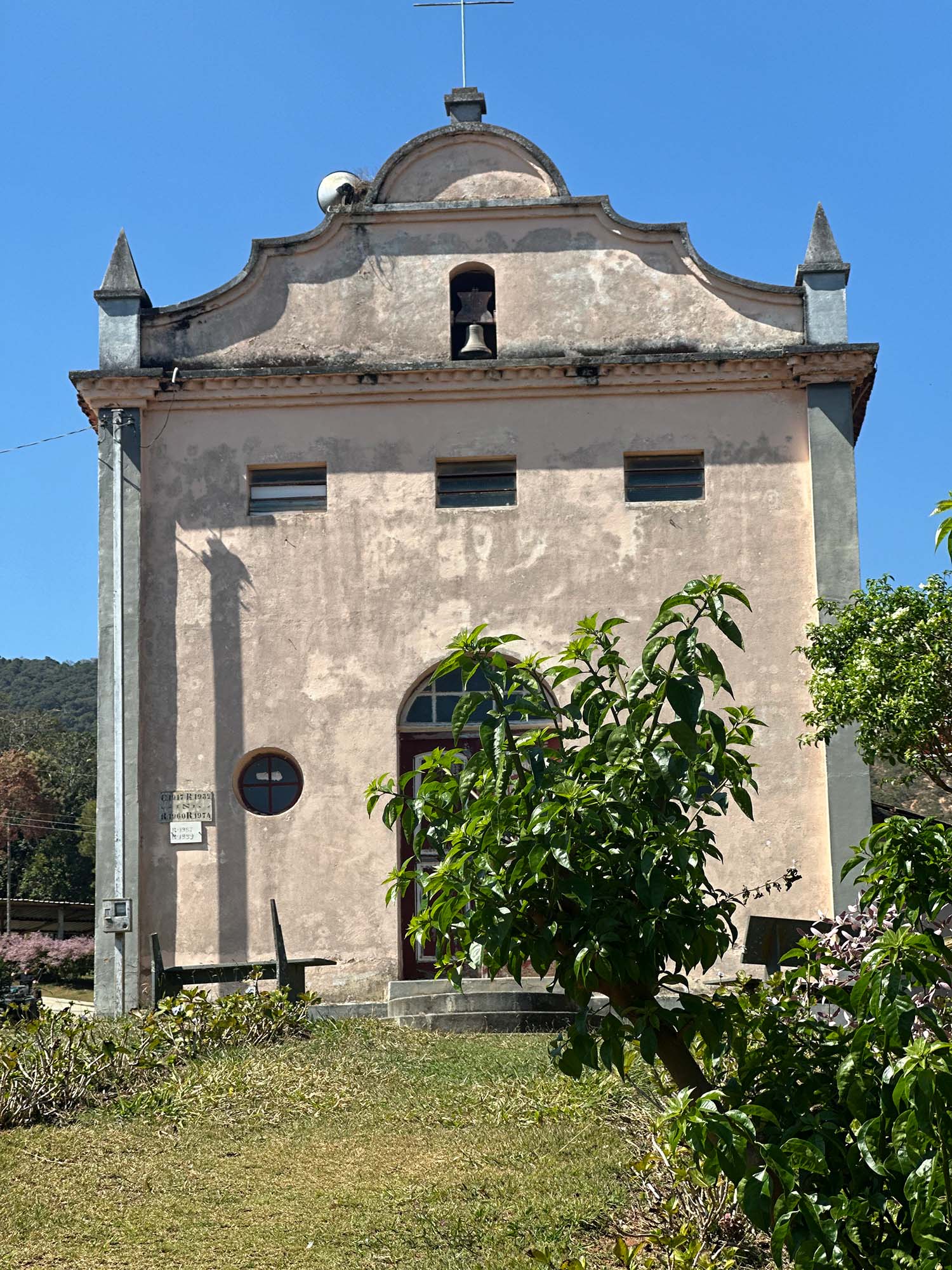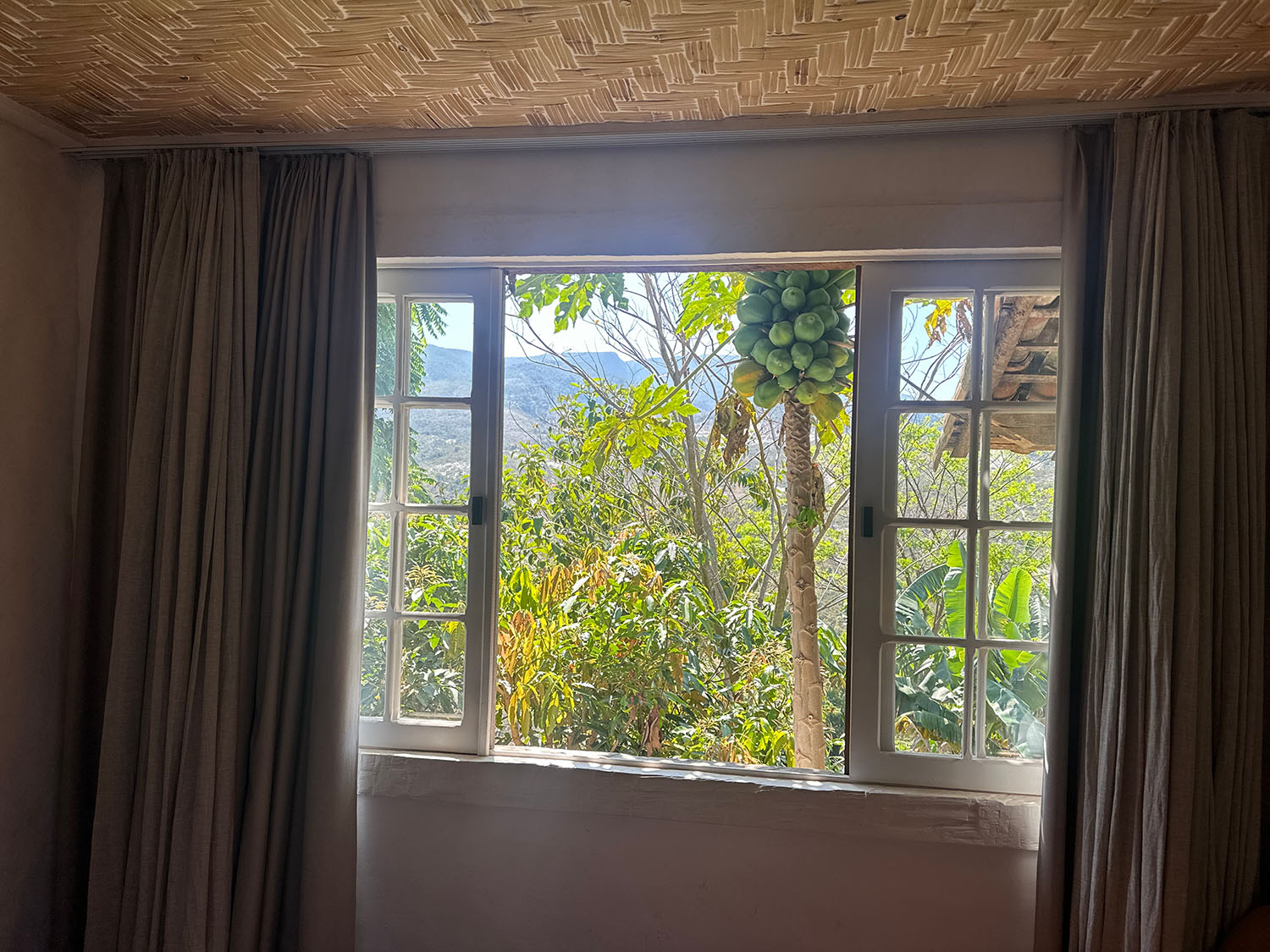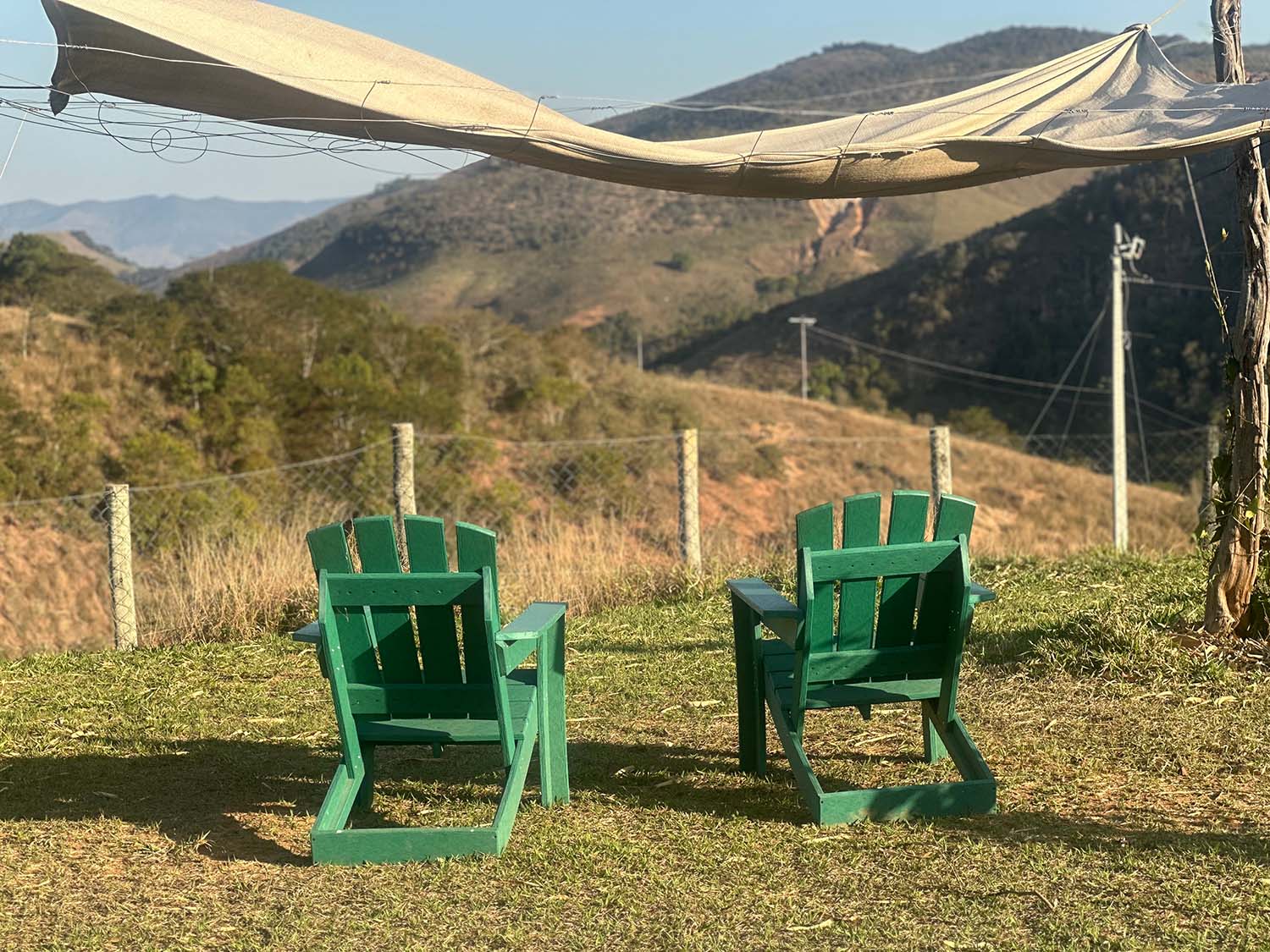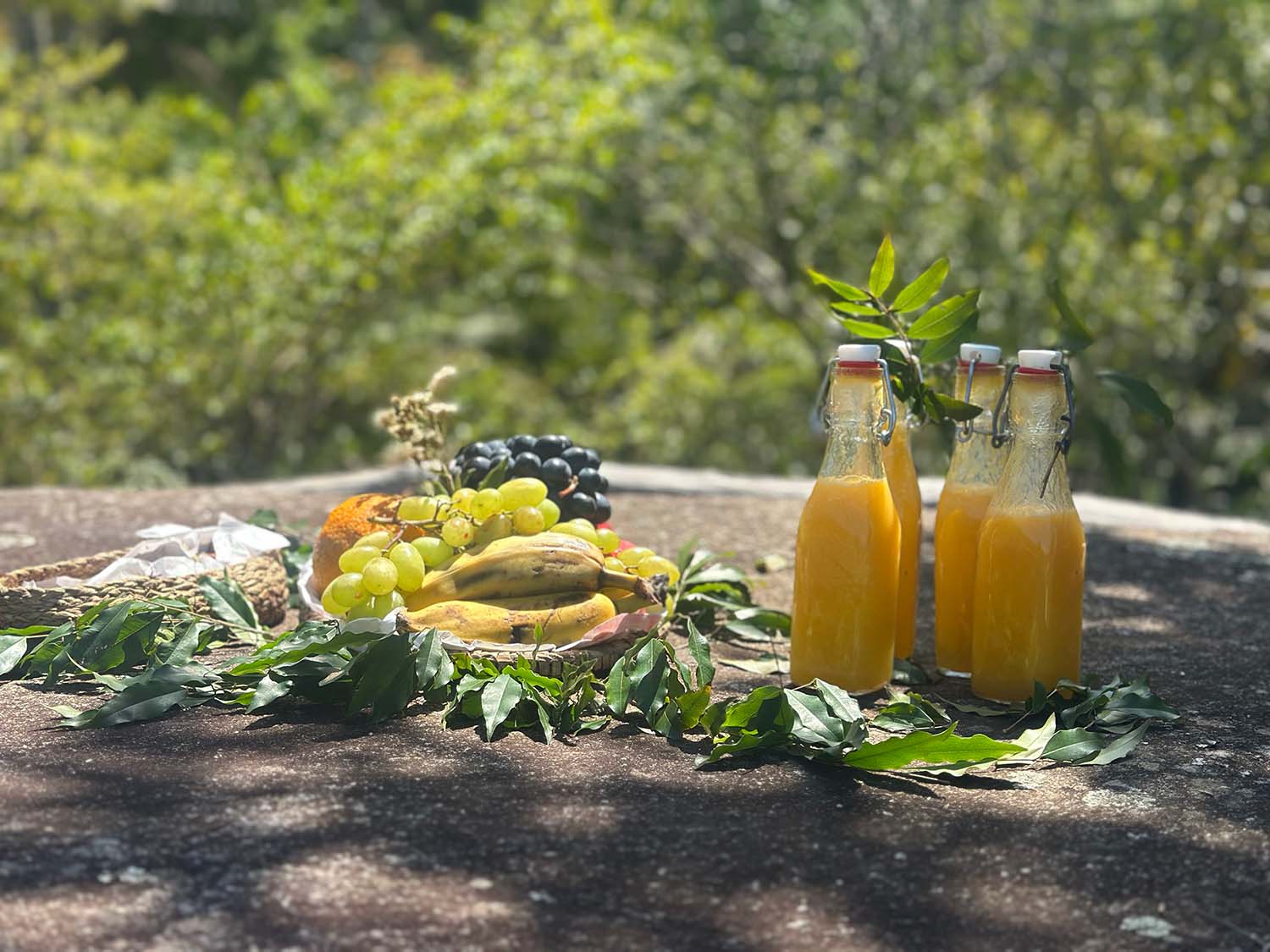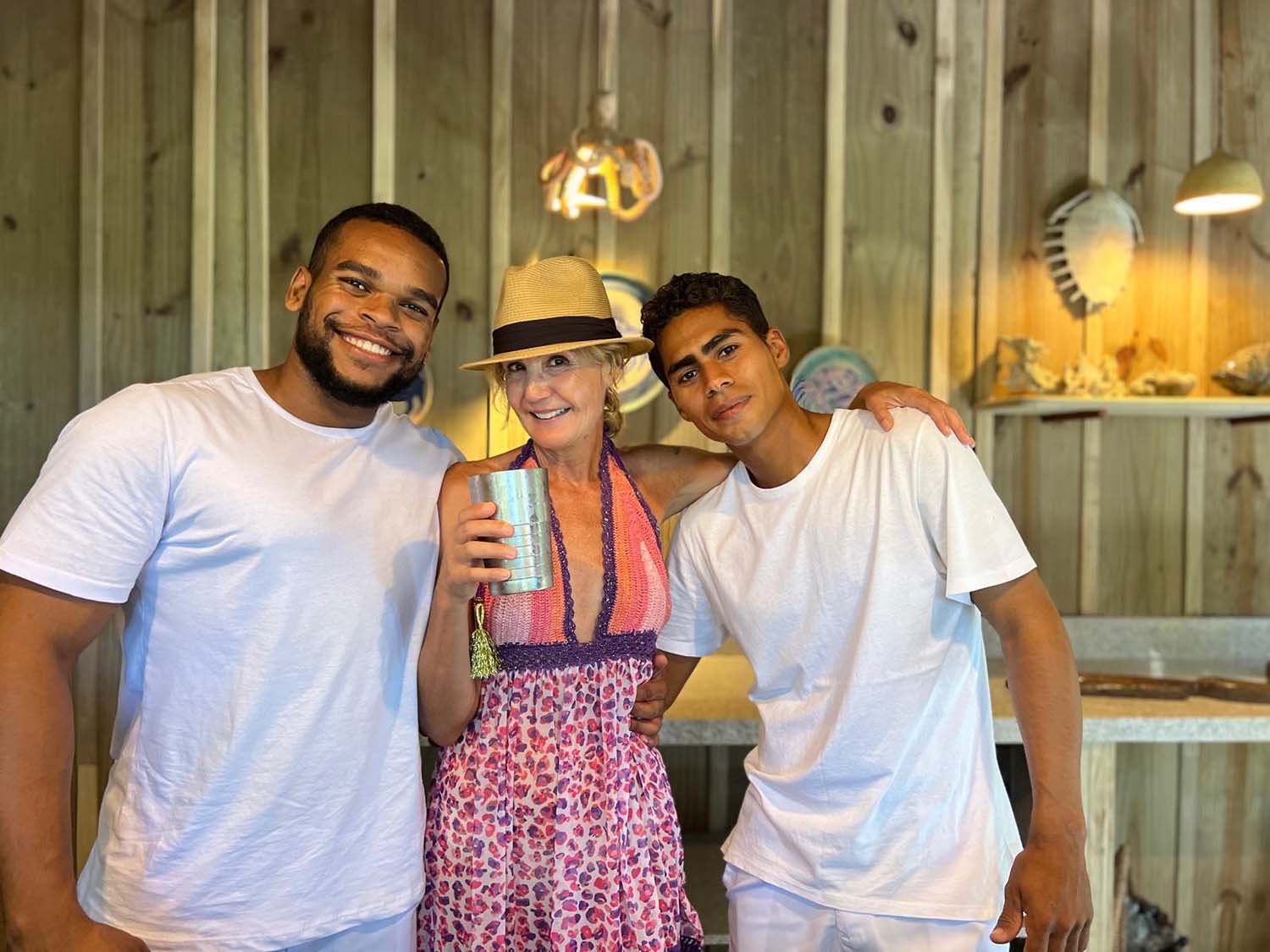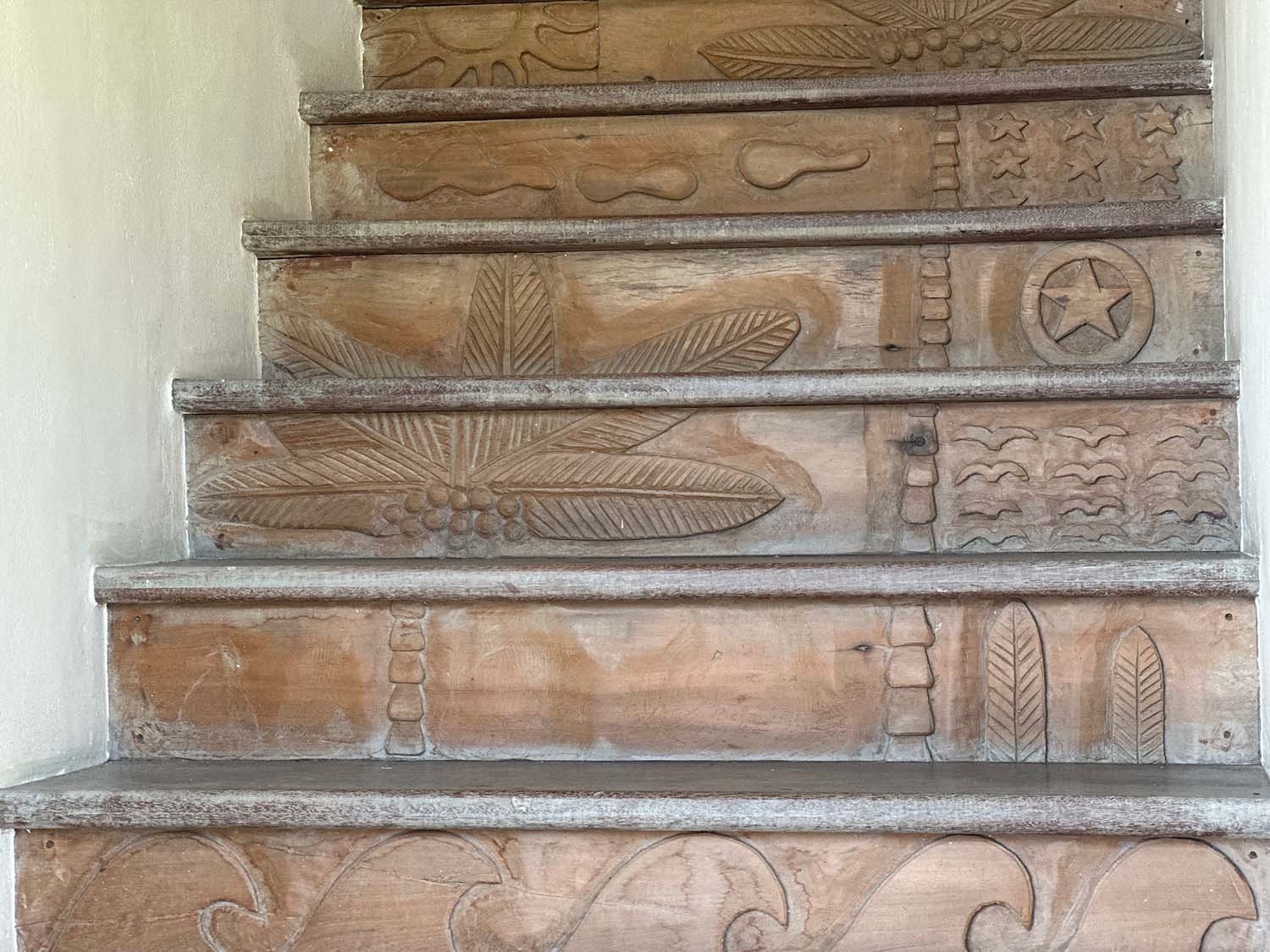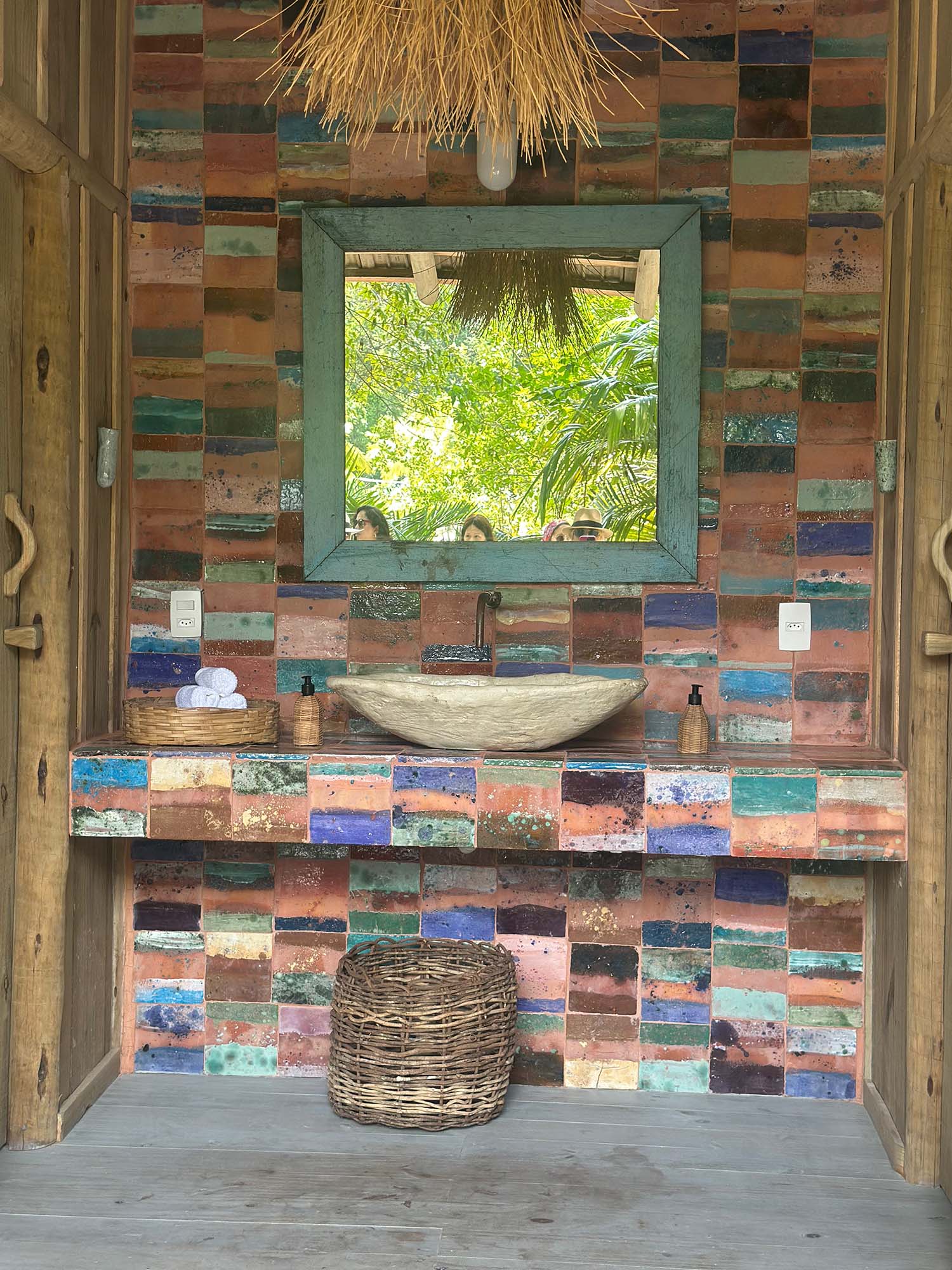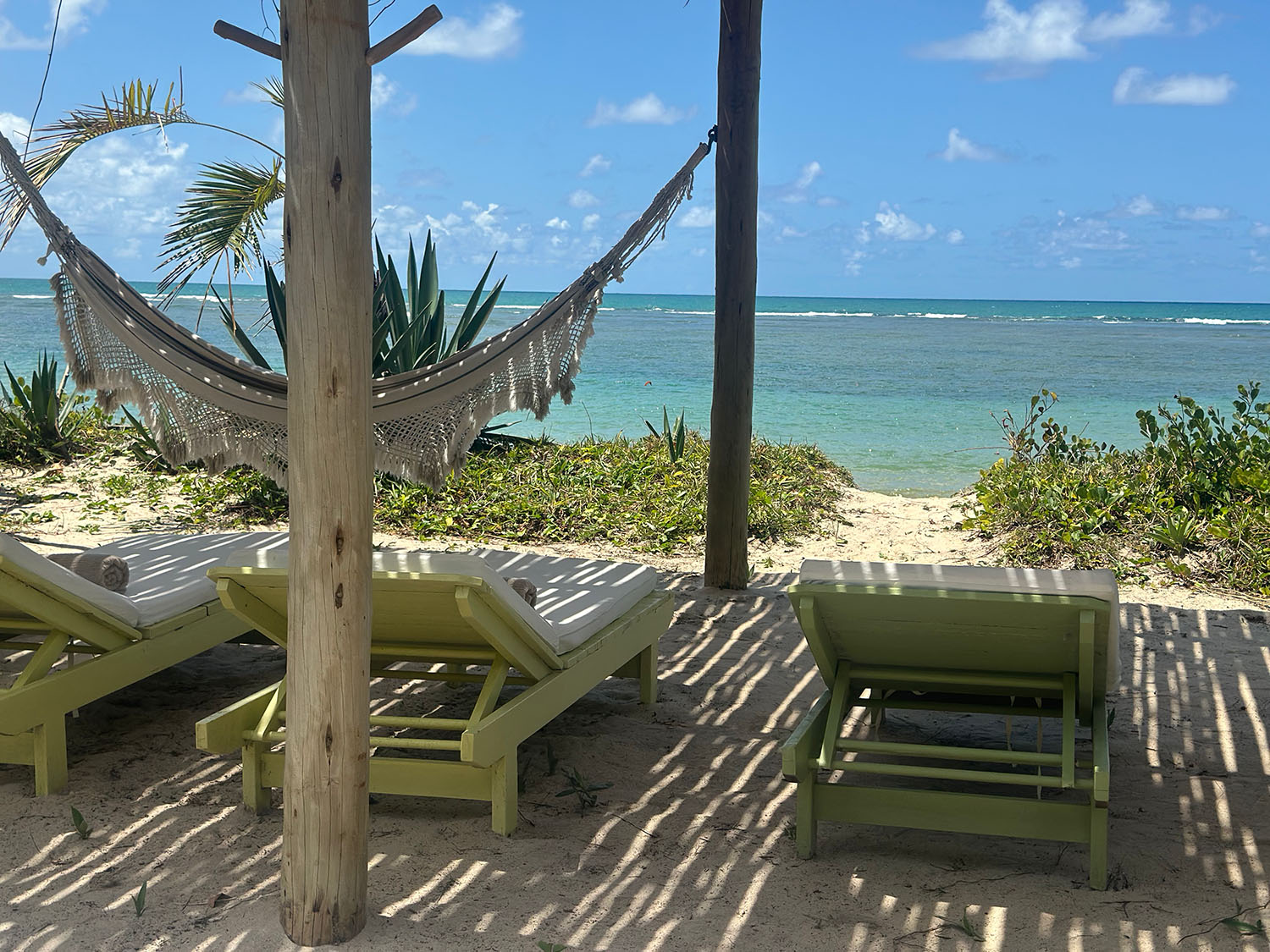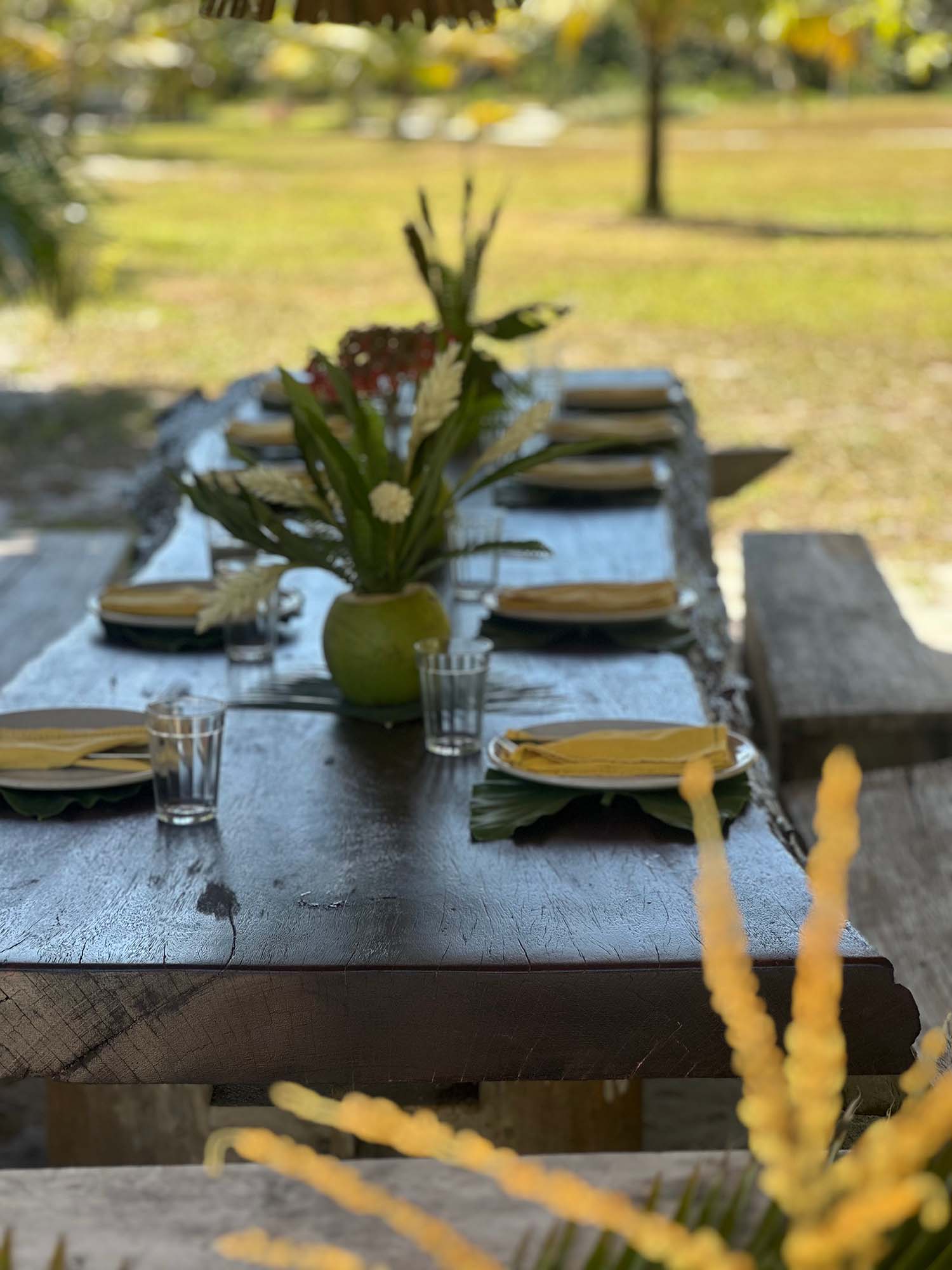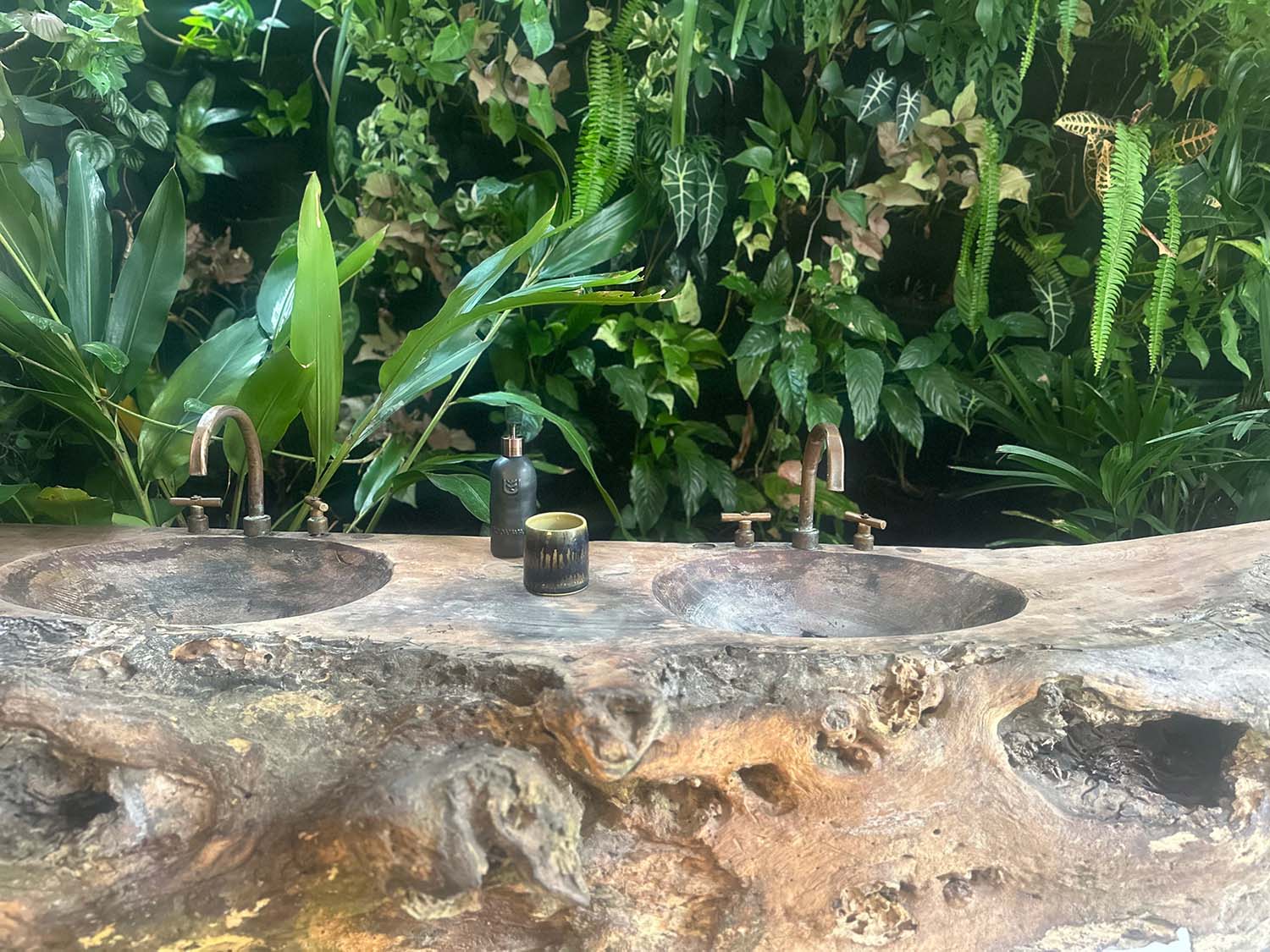Diary /
No Wrong Turn
Date /
September 23, 2025


No Wrong Turn is my ongoing travel diary—as a KAX senior consultant, former expat, recent empty-nester, compression sock devotee, and proud breast cancer survivor. This isn’t a list of must-dos or scathing reviews. It’s just me, writing about the joyful, messy, occasionally chaotic magic of saying yes to more travel. Thanks for coming along. xoxo, Heather
If you’re someone who doesn’t like delicious food that makes you hum with delight, ridiculously beautiful beaches, music in the streets that instantly makes you feel like a cooler version of yourself, lush green jungles overflowing with life, and a culture that practically dances around you—then Brazil probably isn’t for you. But if those things speak your language, here are my top five reasons to visit Brazil (in no particular order):
- The People & the Spirit of Belonging
There’s no single way to “look” Brazilian—which means everyone belongs. It’s a country built on diversity, warmth, and expression. The Brazilian passport is the most in demand on the black market, precisely because Brazil is such a true melting pot; anyone could plausibly be Brazilian. That sense of welcome, of instantly fitting in, is exactly what makes Brazil such an irresistible place to visit. - The Beaches & Nature
From Rio’s iconic Ipanema to Trancoso’s dreamy stretches of sand, the beaches are living rooms with better views. Beyond the coast, Brazil holds some of the world’s most biodiverse rainforests, waterfalls, and wildlife. Nature isn’t an escape here; it’s everywhere. - The Food & Drink
Every region has its flavor story: Bahian moqueca simmering in coconut milk, churrasco carved straight off the skewer in the South, São Paulo’s Japanese influence in sushi. Add in fresh tropical fruit, bold coffee, and the national cocktail, the caipirinha, and Brazil becomes a moveable feast. - The Music, Dance & Energy
Brazil doesn’t just play music—it pulses with it. Samba, bossa nova, forró—there’s always a rhythm to follow. Carnaval is the pinnacle, a technicolor explosion of costume and sound, but truthfully, the energy never stops. Even a street corner feels like a stage. - The Culture & Style of Living
Hotels here are more than places to sleep—they’re experiences built with character, design, and soul. Layer that with Brazil’s art, fashion, design, and a deep sense of history, and every stay feels like stepping into the culture, not apart from it.
PS: Getting there couldn’t be easier. Brazil runs only an hour or two ahead of Eastern Standard Time, so there’s no jet lag drama. With overnight flights from the U.S., you simply get on, have a drink (or two!), fall asleep, and wake up in Brazil. Repeat in reverse on the way home. An eight- to ten-hour flight has never felt so kind.
People often ask about safety in Brazil, and I want to address it directly. The media tends to exaggerate risks, but I felt safe throughout my nine days of travels—whether walking alone in the city or hiking in the jungle. The biggest safety risk? My directionally challenged self! If there's a wrong way to go , I’ll definitely find it.
A Bit of Background: Where Fun Meets Knowledge
This Brazil adventure was part of what’s known in the travel world as a FAM trip. For those of you new to this blog, that’s industry-speak for “familiarization trip.” Translation?
Selected agents (or in my case “selected agencies,” because as we’ve all established, I help KAX with sales and business development and do not plan anyone’s trips because that requires an immense amount of attention to detail, and… have you met me??!) get whisked around to a destination so we can experience it the way our clients would. We tour hotels, participate in local adventures, and find hidden gems, so by the time you’re ready to go, we already know the best of the best!
And let me just say, none of this Brazil deep-dive would’ve happened without Bruno Teixeira from Very Latin. Bruno not only organized and curated every last detail of our trip, but he also traveled with us—five women with big personalities (and a lot of luggage), for nine straight days, and somehow never lost his cool. Honestly, I’m convinced he has the patience of a National Geographic photographer waiting for a snow leopard and the wisdom of Yoda, because he quite literally knows a little something (and often a lot of a little something) about everything. On top of that, he and his husband are Brazilian celebrities in their own right, running the massively popular Tesouros do Brasil YouTube and Instagram channels that showcase the beauty of their country.
Bruno works with Very Latin, a boutique travel company devoted to curating adventures across Brazil and Latin America, and we owe them a big thank you. They gave us the inside track, and now we get to pass that along to our KAX clients.
The Copacabana Palace: Where Rio Wears Its Most Glamorous Smile
Walking into the Copacabana Palace feels like time travel. One moment you’re in 1923, the next you’re firmly in 2025, and somehow it all works. The hotel has seen nearly a century of legends pass through its doors—from Marlene Dietrich to Madonna—and it still carries that aura of being the place in Rio. Glamorous, yes. But also, alive.
The marble lobby makes a dramatic first impression. It’s cool, polished, and the kind of space where you half expect to see tuxedos and gowns gliding across the floor. Then your eyes land on a tray of tall crystal vases filled with sweets. A small detail but done with such elegance it feels like part of the performance. I tried the candied almonds, and I swear they ruined me for all future almonds.
Upstairs, the rooms are drenched in sunlight. The Atlantic stretches out in every possible shade of blue, framed by white curtains that billow theatrically in the ocean breeze. It feels cinematic, like Rio paused for a moment just to pose for you.
But step outside and the tempo changes. Copacabana Beach is buzzing. Kids turning the sand into a soccer (football) pitch, bronzed locals making relaxation look like an Olympic event, and dogs strutting along the promenade with more attitude than most humans. Add in a caipirinha and some live music, and suddenly you’re on Rio time—where “later” really means whenever.
Back inside, the pools are their own stage. The main pool is dazzling, framed by striped umbrellas whose undersides are patterned like bold wallpaper. Even the shade feels stylish. And then there’s the black pool (reserved for the penthouse) —smaller, quieter, perched next to dramatic mountain views. It’s so peaceful you find yourself whispering without realizing it.
Lunch poolside was perfection. A burrata so creamy it deserved its own round of applause, drizzled with olive oil and pesto. Then beef carpaccio, sliced thinner than paper and somehow even more delicate in flavor. It was the kind of meal that makes you rethink every other “good” poolside lunch you’ve had.
The Copacabana Palace is Rio distilled—historic, glamorous, a little over the top in the best way, and never boring. It’s where old-world elegance meets the city’s playful, sun-soaked energy. I left smitten, and honestly, already plotting my return.
Best For:
- Luxury Travelers: For an upscale and glamorous experience.
- History Enthusiasts: Rich in historical significance with notable past guests.
- Beach Lovers: Close proximity to the lively Copacabana Beach.
- Culinary Aficionados: Offers high-quality dining options.
- Romantic Getaways: Ideal for couples seeking a romantic escape.
- Relaxation Seekers: Perfect for unwinding by the pool or beach.
{gallery}
Janeiro Hotel: Where Sleek Meets Soul on Leblon Beach
The moment you step into the Janeiro Hotel, you feel like a more hip version of yourself. Not the kind of “cool” that’s curated and forced, but the effortless kind—like Rio itself just handed you an upgrade. Everything about this place is sleek and minimalist, yet it never feels cold. Even the scent drifting through the lobby and hallways makes you feel put-together and in the know, without trying too hard.
The Janeiro Hotel was created by Oskar Metsavaht, the Brazilian designer behind Osklen, and it shows. His eye for blending modern luxury with sustainability and soul is everywhere. This isn’t just a hotel on Leblon Beach—it’s a statement on contemporary Rio, pared down and polished with just the right amount of edge.
The lobby sets the tone: clean lines, warm woods, soft lighting. It’s boutique in feel, almost quaint in its intimacy, but elevated with a kind of design confidence that whispers rather than shouts. Every detail is purposeful, every surface chosen with intent, but none of it feels precious.
The rooms are where the hotel really wins you over. No matter which room category you choose, the view is breathtaking. Floor-to-ceiling windows frame Leblon and the endless Atlantic beyond, while the interiors keep things neutral and understated so the ocean can take center stage. The design is minimalist but not stark, textures and tones make the space feel calm, lived in, and deeply stylish.
Upstairs, the rooftop feels like the city’s best-kept secret. A winding staircase delivers you to a bar and pool that could double as the setting for a very chic film. The vibe is low-key but magnetic: subtle music, a crowd that looks stylish but unbothered, and views stretching from Ipanema to the horizon. It’s Rio’s beach culture, distilled and elevated.
Sustainability is woven into the DNA of the hotel, not tacked on as an afterthought. Their philosophy, “ASAP—As Sustainable As Possible, As Soon As Possible,” comes through in the smallest details. Even the laundry bags are made from repurposed fishing nets pulled from the ocean, turning something harmful into something quietly useful. It’s thoughtful, creative, and never preachy—just another layer of the hotel’s understated cool.
Dinner at the hotel’s restaurant continued the theme. Understated but spot-on. We ordered a cheese and charcuterie board, and it was clear someone had given it the kind of thought most places reserve for their tasting menus. Each cheese was chosen with intention, layered and balanced, with a variation of blue cheese that was so good it practically demanded silence at the table. Every bite reminded me that this is a hotel that notices everything.
Even the vodka soda I ordered became an exercise in precision. The waiter refused to drop in just any ice cube. Instead, he went to the other bar to bring back a perfect, oversized cube, slow-melting, glossy, unapologetically proper. The lemon juice? Freshly squeezed, naturally. Small details, yes, but the Janeiro Hotel thrives on them.
This is not a flashy hotel. It doesn’t compete with the Copacabana Palace’s grandeur or the city’s party spirit. Instead, it redefines what luxury in Rio can be: modern, sustainable, intimate, and so effortlessly stylish you feel transformed just by being there. It’s boutique cool with substance, and it leaves you wanting to carry a bit of that vibe home with you.
Best For:
- Sustainability Advocates: Emphasizes modern luxury combined with eco-friendly practices.
- Style Seekers: Ideal for those who appreciate sleek, minimalist design with a touch of soul.
- Intimate Atmosphere: With just over 50 rooms, it offers a cozy, boutique experience for guests.
- Ocean View Lovers: Every room provides breathtaking views of Leblon Beach and the Atlantic.
- Food Enthusiasts: Features thoughtfully curated dining experiences.
- Chill Vibes: Attracts guests who prefer low-key elegance over flashy atmospheres.
{gallery2}
Backstage at Rio Carnival: Where the Curtain Lifts and the Magic Begins
If Carnival is Rio’s greatest show, then the behind-the-scenes tour is its secret backstage pass. It’s like being Dorothy pulling back the curtain on the Wizard of Oz—except instead of smoke and mirrors, you discover sequins, feathers, samba beats, and the soul of Brazil itself.
Most people know Carnival as a parade of glitter and music, a kaleidoscope of floats rolling through the Sambadrome. But step behind the curtain, and you realize it’s far more than a party—it’s history, religion, art, and culture woven together, all wrapped in a costume that sparkles under the Rio sun.
The roots of Carnival stretch back to the Portuguese colonial era, when pre-Lent festivals mixed with African traditions and Catholic rituals. What was once a religious celebration before the fasting of Lent transformed, over centuries, into the spectacle we see today. The samba schools, which design and perform each parade, are more than just dance troupes—they’re community organizations, storytellers, and cultural ambassadors. Each school spends an entire year preparing its theme, music, floats, and costumes. Seeing this up close is like stepping into a living history lesson, only with a lot more sequins.
On the tour, you walk through the massive warehouses where floats are constructed. These aren’t floats—they’re moving stages, towering sculptures that tell a story in vivid color. Artists paint, weld, and stitch with the kind of passion that makes it clear this is not just work; it’s devotion. Then there are the costumes: racks upon racks of feathers, rhinestones, and fabrics that make Broadway wardrobes look minimalist. Every piece has meaning, designed to bring each school’s story to life.
And yes, you get to try them on. There is something transformative about stepping into an authentic Carnival costume. One moment you’re a tourist; the next, you’re shimmering in a cascade of feathers, and suddenly you get it. Carnival isn’t about watching—it’s about participating.
Just when you think it can’t get any more surreal, dancers arrive to teach you samba. They move with a joy that’s contagious, and within minutes you’re shaking your hips, laughing, and realizing that even if your samba skills are more “awkward shuffle” than “fluid rhythm,” you’re part of something larger. Its culture taught through movement, history explained through music, and joy translated into dance.
The beauty of this tour is how it blends the serious and the celebratory. You leave understanding Carnival not just as a parade, but as Brazil’s identity on display—its resilience, its creativity, its spirituality, and its irresistible sense of fun. Its faith expressed in feathers, history told through rhythm, and community embodied in movement.
Walking out, I felt like I had been let in on Brazil’s greatest secret: Carnival isn’t just a party. It’s a heartbeat. And for a few hours, I got to feel it from the inside.
{gallery3}
Ibiti Projecto: Where Rustic Luxury Lives in the Heart of Brazil
At Ibiti Projeto, the message greets you before the place does. A simple wooden sign whispers truths painted in yellow: “We are healers of our home. We are as big as our dreams. Dreams that are dreamt together come true.”
It’s not just decoration—it’s a manifesto. Here, travel is more than escape. It is regeneration. It is dreaming together with the land, the community, and with yourself. This ethos infuses every stone path, every waterfall trail, every antique-filled lodge. Ibiti Projeto is not about taking from a place; it’s about giving back, restoring balance, and remembering that luxury can be both understated and deeply meaningful.
And yet, for all its seclusion, Ibiti Projeto is remarkably accessible. Just a four-hour drive from the buzz of Rio de Janeiro, or a quick forty-minute helicopter ride if you’re channeling your inner James Bond, it offers the perfect balance between the city’s vibrancy and the countryside’s restorative stillness. It’s an essential counterpoint to Rio, and truly a must for anyone visiting Brazil.
It is not often that I am left speechless (and trust me, my husband would say that’s really saying something). But at Ibiti Projeto, I found myself grasping for words that felt big enough, tender enough, true enough. And even now, I know they will fall short.
Ibiti Projeto Village is a place that defies easy description. The land itself feels ancient and alive—rolling hills, private beaches carved into still lakes, and waterfalls that pour like ribbons from the cliffs. Everything holds a duality here: stillness in motion, calmness in energy. It’s nature performing a symphony, and somehow, you’re invited in as a listener.
The history of Ibiti Projeto makes it even more extraordinary. In 1982, Fazenda do Engenho was purchased and slowly transformed. The old farmhouse became the inspiration for Engenho Lodge, the first hospitality project here. From that seed, Ibiti Projeto grew into more than 6,000 hectares of land in rewilding—an ongoing effort to restore native flora and fauna. But it’s not just about the land. The vision is regenerative tourism, with a focus on harmony between people and nature, and investment in the economic sustainability of the surrounding community. It is travel not just as escape, but as healing—for both earth and soul.
Ibiti Projeto is not a place for a quick visit. It is an understated luxury retreat within a charming, authentic community. The two accommodation options—Ibiti Village and Engenho Lodge Farmhouse—each tell their own story, offering distinct ways to become part of the Ibiti Projeto experience.
Ibiti Village lets you live within a small community in the interior of Minas Gerais, in Mogol—a village with just over twenty residents, including a small primary school on property. Eleven houses are available, each one distinct, and staying there feels less like checking into a hotel and more like joining a living, breathing story. It is immersion with refinement; simplicity wrapped in luxury.
Engenho Lodge Farmhouse is the soul of Minas tradition paired with subtle touches of exclusivity and sophistication (and perhaps the one that feels closest to a traditional bed-and-breakfast—though elevated). The lodge feels both rooted and rare, familiar and elevated. Every corner nods to heritage while quietly offering comfort that feels entirely modern. It’s the kind of place where you wake up both grounded and spoiled—the best kind of balance, and the kind you wish you could bring home.
Each of these two accommodations also has its own wellness spa—peaceful, understated, and rustic in the same way the rest of the property is. It’s not just relaxation; it’s a continuation of the property’s philosophy—healing, restoring, and reminding you of balance.
No matter which accommodation you choose, dining at Ibiti Projeto feels less like a meal and more like a ceremony of place—ingredients sourced from the land, prepared with reverence, and served with an ease that makes refinement feel natural.
Dishes are thoughtful, delicate, and deeply connected to the rhythms of the property, turning simplicity into quiet luxury. And yes, they may or may not have taken the whole “for the table” concept a little too literally when they let me wander straight through their gardens after a hike. I came out with my belly full of strawberries, cherry tomatoes, and arugula—my sticky fingers giving me away before I even sat back down.
Evenings slip into elegance with ease, when private piano concerts sometimes precede dinner. For a moment, you feel as though you’ve stepped back in time—elegant, elevated, and transported, yet never weighed down by formality.
And then there are the people. The team at Ibiti Projeto radiates a quiet, grounded joy. Their pride in being part of this project is contagious but never forced. It’s in the way they smile, the calm confidence in their movements, the warmth in their voices. You do not feel “served” here. You feel welcomed into something sacred.
The offerings here only deepen the sense of wonder. Stargazing is a revelation—on clear nights, the Southern Cross hangs above you, ancient and steady, while Saturn appears with its rings visible in perfect clarity. It is impossible not to feel small and infinite all at once. Mornings can begin with yoga, breath syncing with the sounds of the valley, or sound-healing sessions that seem to retune not just your body but your spirit. Hiking, biking, and horseback riding trails wind through waterfalls, forests, and high vistas, each step a reminder of nature’s resilience and generosity.
The art is another layer of magic. The “big family” installation, perched atop a mountain path, stops you iterally in your tracks. You round the corner and suddenly, there it is, stretching against the sky. It takes your breath in that instant, exactly as it is meant to. It is not simply art—it is communion.
Ibiti Projeto is not just a destination. It is a reminder of what travel can be when it is rooted in reverence—for the land, for people, for beauty itself. It is healing, it is dreaming, and it is—quietly, profoundly—joy. And though words will never quite contain it, perhaps that is what makes it unforgettable.
Best For:
- Mindful Travelers: Ideal for those seeking a deeper connection with nature and personal well-being through regenerative travel experiences.
- Luxury Seekers: Perfect for guests who appreciate understated luxury, blending comfort with authentic experiences in a tranquil setting.
- Nature Enthusiasts: Attracts individuals who enjoy outdoor activities such as hiking, biking, and horseback riding amidst stunning natural landscapes.
- Cultural Immersion Seekers: Great for travelers wanting to engage with local communities and traditions in a meaningful way.
- Wellness Advocates: Suited for guests who prioritize wellness through yoga, sound healing, and holistic therapies in a serene environment.
- Art & Beauty Appreciators: Appeals to those who are inspired by art, music, and beauty, as the property often hosts private concerts and features breathtaking installations.
- Eco-Conscious Travelers: Perfect for individuals who value sustainability and want to support conservation efforts through their travel choices.
{gallery4}
UXUA Casa Hotel & Spa: Where the Square Beats and the Stories Live
Some hotels exist to impress. UXUA Casa Hotel & Spa exists to live. Every villa, or “casa,” is its own character—different in style, deliberate in detail, but united in warmth. Nothing here feels stamped out. Everything feels stitched together with thought, history, and a little mischief. The kind of place where you spot the hammock before you notice the bed and immediately start negotiating with yourself about whether unpacking can wait. (Spoiler: it can.)
And then, there’s the setting. UXUA sits right on the Quadrado, the historic square that is Trancoso’s beating heart. By day, it’s peaceful. By five o’clock, though, something magical happens: the square wakes up. Shops creak open, restaurants hum with conversation, and children spill into the square to play football (American soccer). Against a backdrop of the sea and the church’s whitewashed walls, it’s as if a painting has come to life. Dozens of establishments line the square, many strung with fairy lights that glow as the evening deepens, turning the whole scene into something impossibly cinematic.
From there, life flows naturally back into UXUA itself. The casas are tucked among hibiscus, orchids, and lush Atlantic rainforest greenery. Each one is distinct, yet all are bound by the same philosophy of thoughtfulness. The food carries that same spirit—fresh, local, deliberate. The main restaurant tempts you to linger, but the beach bar, carved from an old fishing boat, is where Trancoso’s spirit shines: casual, clever, and unforgettable.
Behind that vision are the men who shaped it. Wilbert Das, once the creative director of Diesel, brought a designer’s eye for reinvention to Trancoso. That’s why nothing at UXUA feels mass-produced. A fishing boat becomes a bar, reclaimed wood becomes art you can sit on, and every casa feels more like a character than a room. Beside him is Bob Shevlin, who first arrived in Trancoso in the 1970s when it was still a sleepy fishing village without electricity. Bob has been here ever since, a storyteller who makes the town’s history come alive. Spend ten minutes with him and suddenly the church, the sea, and even the cobblestones of the Quadrado feel like they’re speaking to you.
Their care extends seamlessly into the team around them. It isn’t just Bob and Wilbert who care for UXUA this way. The staff carry the same pride and attentiveness. They move with an ease that makes everything feel natural, yet every detail is considered. My own ignorance of the language caused a bit of confusion one morning when I sent a message to UXUA’s concierge asking where the room’s coffee cups were located (They were in plain sight, tucked neatly in a cabinet.) The team, however, interpreted this as my wanting larger cups. So, what did they do? They went into town, bought me a bigger cup, and left it waiting for me. I, of course, took that as an opportunity to have double the amount of their delicious coffee—and for anyone who knows me, I probably don’t need more caffeine. That level of thoughtfulness, over something as small as coffee, says everything about how UXUA is run.
The same spirit of creativity and care is found in Vida Lab, UXUA’s own little atelier of wellness, where simple ingredients are treated like art. One afternoon we tried their homemade kombucha, cashews wrapped in chocolate, and a matcha chocolate so refined it felt like a lesson in restraint. It’s playful, experimental, and completely in line with UXUA’s ethos: simple ingredients, elevated into something quietly extraordinary.
And then, there is the spa—a space that reflects UXUA’s balance of elegance and simplicity. I had the privilege of experiencing one of their signature massages. As a recent breast cancer survivor, I’ve grown cautious about massages, never quite sure how my body will respond. I explained this to the therapist, who immediately made me feel at ease with a kind of quiet confidence. What followed was a treatment that was both restorative and deeply comforting—expert hands, thoughtful pacing, and a gentleness that left me feeling safe and renewed. It wasn’t just a massage. It was healing wrapped in grace.
UXUA is more than a hotel. It’s a living story, where design, history, and community come together, shaped every day by the square, the sea, and two men who live not just beside it, but within it.
And if you find yourself here, sink into the hammock and wait. At dusk the square bloom, children’s laughter echoing against the church walls, the sea catching the last of the light, neighbors greeting each other like a daily ritual. UXUA doesn’t give you a view of it. It gives you a place in it.
Best For:
- Cultural Enthusiasts: Ideal for those who appreciate history and local stories, as the hotel is deeply connected to Trancoso’s vibrant culture.
- Relaxation Seekers: Perfect for travelers looking for a serene environment with cozy hammocks and private spaces.
- Quiet Retreat Seekers: Best suited for guests who crave seclusion in their accommodations while remaining just steps away from the lively Quadrado Square.
- Food Lovers: Great for visitors interested in fresh, local cuisine and creative dining experiences.
- Luxury Seekers: Appeals to those who desire personalized service and thoughtful attention to detail in a unique setting.
- Wellness Advocates: Suited for individuals seeking rejuvenation through holistic treatments and wellness offerings.
- Art and Design Aficionados: Attracts guests who value creativity and artisanal craftsmanship in their accommodations.
- Families: Ideal for families wanting a welcoming atmosphere where they can enjoy both relaxation and engaging local experiences without being too far from the action.
Hotel UXUA Mare: Where Timeless Elegance Meets Authenticity in Trancoso
Uxua’s new sister property (with less than a handful of villas), now in soft launch, feels like a secret carefully revealed. Tucked along a secluded stretch of Trancoso’s coastline, it carries the same philosophy that made the original UXUA beloved: a deep respect for history, community, and authenticity. The same owners as UXUA gathered historic Bahian casas, dismantling them piece by piece and transporting them here, where they were rebuilt by local artisans with extraordinary care.
Step inside and the details tell the story. Original wooden beams run overhead, bearing the marks of age and time. Handcrafted tiles, each unique, line the floors and walls, cool underfoot and alive with character. Nothing feels new for the sake of new—everything has been touched by hand, preserved, or made with intention. The architecture is not just restored; it is reimagined, blending the soul of Bahia’s past with a quiet, contemporary elegance.
Privacy is central to the design. Each villa feels like its own world: private pools tucked into lush gardens, shaded verandas with hammocks that sway in the breeze, and sandy paths leading to a beach that feels entirely your own. Seclusion here is effortless—it’s not imposed, but inherent.
Dining continues this philosophy of rooted simplicity. The chef creates daily menus shaped by what the fishermen bring from the sea and what ripens in the gardens. When we visited, we tasted one of her creations: grilled fish, impossibly fresh vegetables, and a dessert of homemade mango and yogurt ice cream, served over crisp dried coconut. Elegant, unfussy, and unforgettable.
Even in its soft launch, the property already feels timeless. It embodies the vision of its founders—that luxury is found in authenticity, not excess; that beauty is best when it is crafted, not manufactured. This is not just UXUA’s sister property. It is a continuation of a story that values heritage, craftsmanship, and the kind of quiet seclusion that leaves you feeling profoundly renewed.
Best For:
- History Buffs: Perfect for those who appreciate a deep respect for historical architecture and heritage.
- Secluded Retreat Seekers: Ideal for travelers looking for a private getaway with intimate villas and lush gardens.
- Authenticity Lovers: Attracts guests desiring genuine experiences that reflect local culture and craftsmanship.
- Food Enthusiasts: Great for foodies interested in fresh, locally sourced cuisine prepared with care.
- Luxury Seekers: Appeals to those who value understated luxury characterized by simplicity and elegance rather than excess.
- Nature Aficionados: Ideal for visitors who enjoy natural beauty and tranquil beachfronts, providing a serene escape.
{gallery5}
Kayaking Through the Atlantic Forest’s Green Heart: Where Serenity Floats
Tucked into the lush stretches near Trancoso, the Rio do Brasil reserve feels like you’ve stepped into a living, breathing piece of history. It was on these shores that the first Portuguese stepped onto what we know today as Brazil. Protected for decades, this reserve safeguards dense forest and winding waterways that are vital both for local ecosystems and for the communities nearby. Instead of city reservoirs and jogging paths, you’ll find giant samaúma trees, butterflies the size of postcards, and monkeys that seem to think of the canopy as their personal playground.
The reserve covers hundreds of hectares of Atlantic rainforest and teems with wildlife. On a good day, you might spot toucans, herons, or even a slow-moving sloth. Trails snake through thick vegetation, but the real magic is out on the water. Which is exactly where we found ourselves.
I paired up with Alison, a fellow traveler and, small world - also from New England. We both learned to paddle at summer camps, and as we tried to steer our kayak straight, we tossed around nautical terms like "starboard" and "stern," all while pretending to play it cool. Meanwhile, pesky insects buzzed around us, clearly ready to join the adventure!
We kayaked for two hours along the Rio do Brasil, slipping through green corridors of overhanging branches. Each bend seemed to open into something new—bats darting from stone walls, electric-blue butterflies flitting by, and the chatter of jungle just out of view. Proudly, I made it through the whole two hours without tipping or doing a dramatic leap to shore—even when spiders decided our kayak looked like a convenient landing pad. The forest apparently approves of my paddling. The shore, however, did not. Sunburned and triumphant, I stepped out of the kayak, tripped over a stray wooden lounge chair, and sliced my leg open. With no Band-Aids in sight, I went full MacGyver and tied my extra bathing-suit top around the wound to stop the bleeding. True story: I survived the river intact but nearly lost to resort furniture.
The Rio do Brasil reserve isn’t about checking boxes. It’s about slowing down and remembering how alive the forest really is.


